KAYAKING THE SEINE
From Vernon to Honfleur
The idea of rowing down a river to the sea has been in the back of my mind for some time. Although I admit to having long dreamed of the Yukon in Alaska and the Amazon in Brazil, my trips back and forth by train between Paris, where I study, and Rouen, my hometown, inspired me to paddle down the Seine in a kayak. At the start of autumn in October 2016, thanks to the Rouen canoe kayak club, I borrowed a sea kayak and set off down the Seine to La Manche.
” Paris – Le Havre: a single city with the Seine as its main thoroughfare “.
– Bonaparte
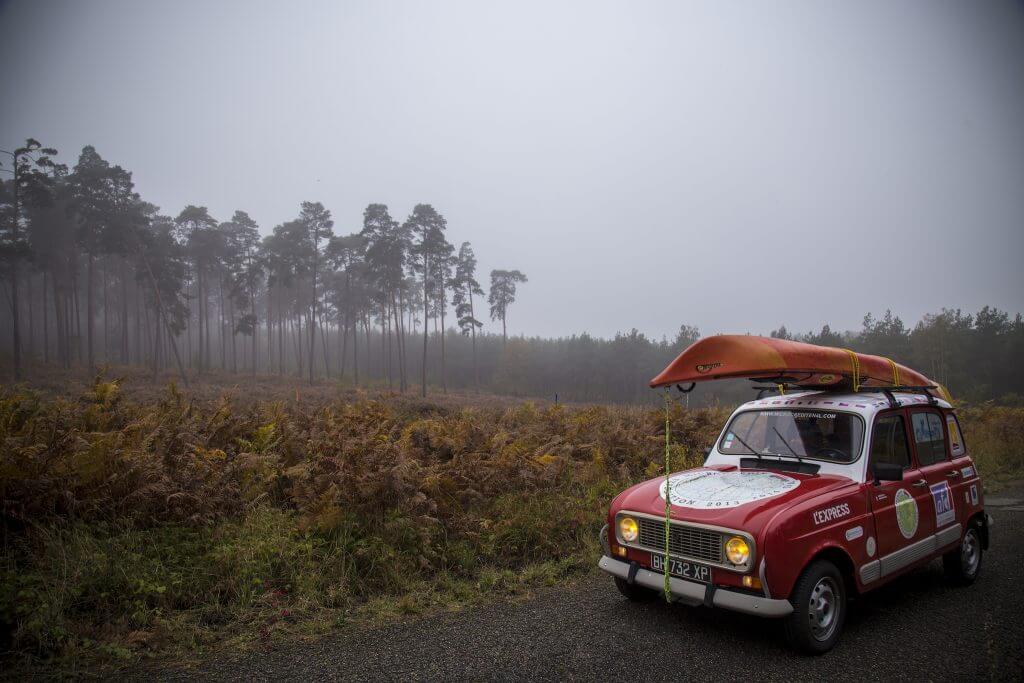
With my kayak securely fastened to the roof of my 4L, we set off for Vernon along country roads.
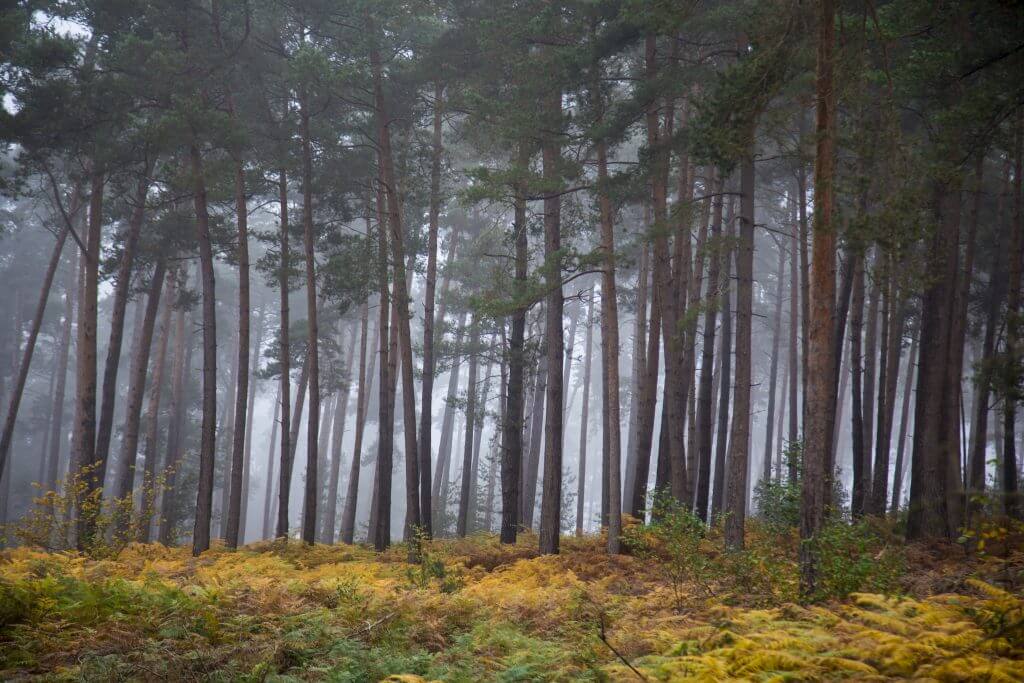
Thick mist slowly invades the forest in early autumn.
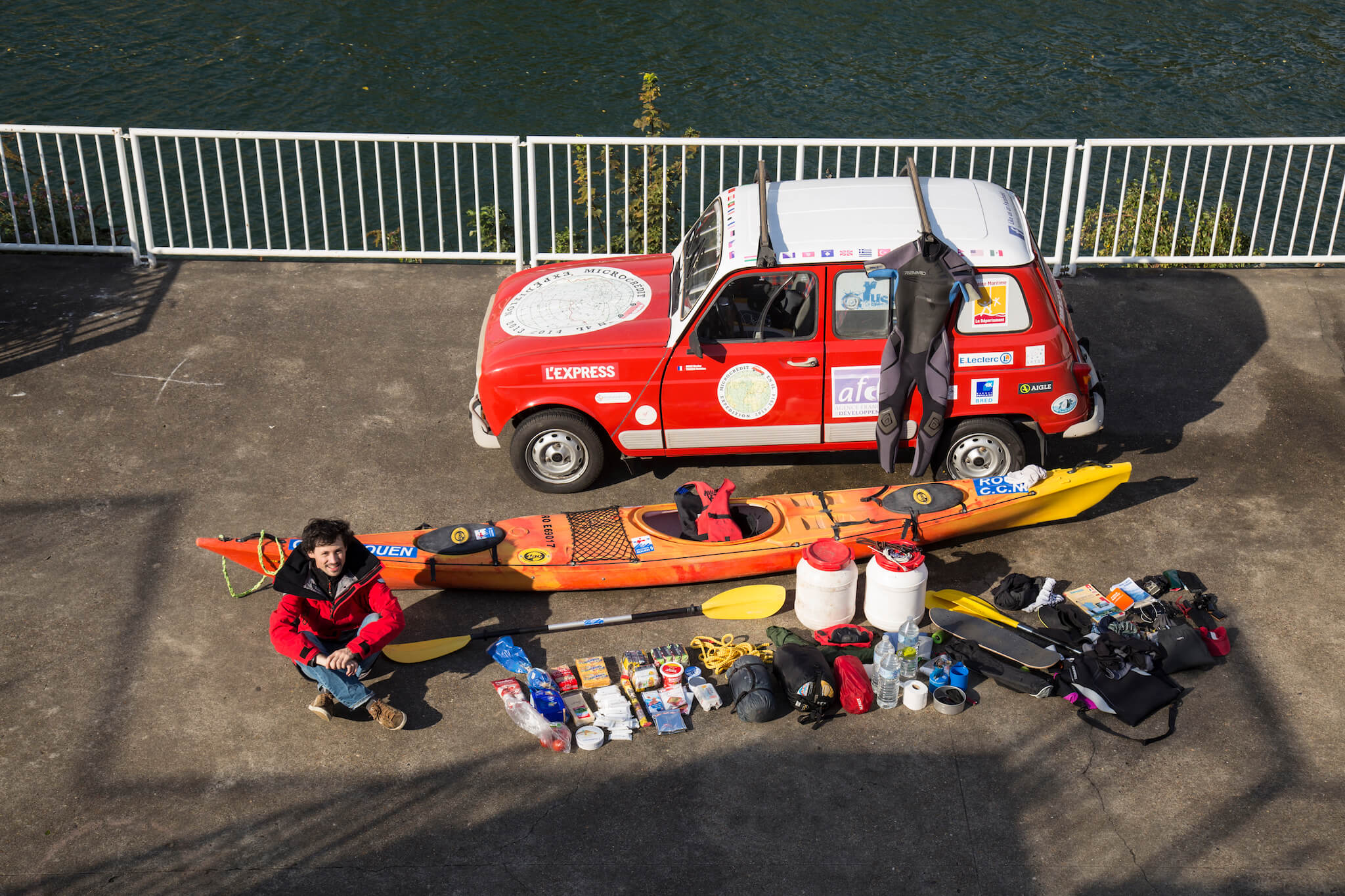
I set off alone with the aim of being self-sufficient in food, so as not to waste time and energy refueling. I only refilled my water bottles halfway through. Here’s what I took with me: FOOD: 2 sausages, tomatoes, sliced bread, Emmental cheese, Camembert, peanuts, saltine crackers, instant noodles, pâté, freeze-dried soups, freeze-dried mashed potatoes, 2 tins of tuna, 6 hard-boiled eggs, chocolate, 40 cereal bars, 7L of water // CAMP EQUIPMENT: tent, sleeping bag, sleeping bag topper, ground sheet, toilet paper, stove, canteen and cutlery, knife, water bottle, lighter, headlamp // CLOTHING : wetsuit (not used), waterproof jacket, fleece, jeans, waterproof pants, waterproof shoes, sneakers, buff, cap, mittens, “first and second skin” technical clothing // ELECTRONICS: tripod, camera, 2 lenses, batteries // OTHER: toothbrush, books, notebook, pen, sunglasses, waterproof bags, microfiber towel, a skateboard (for portaging, but not taken along in the end), bungee cords and ropes.
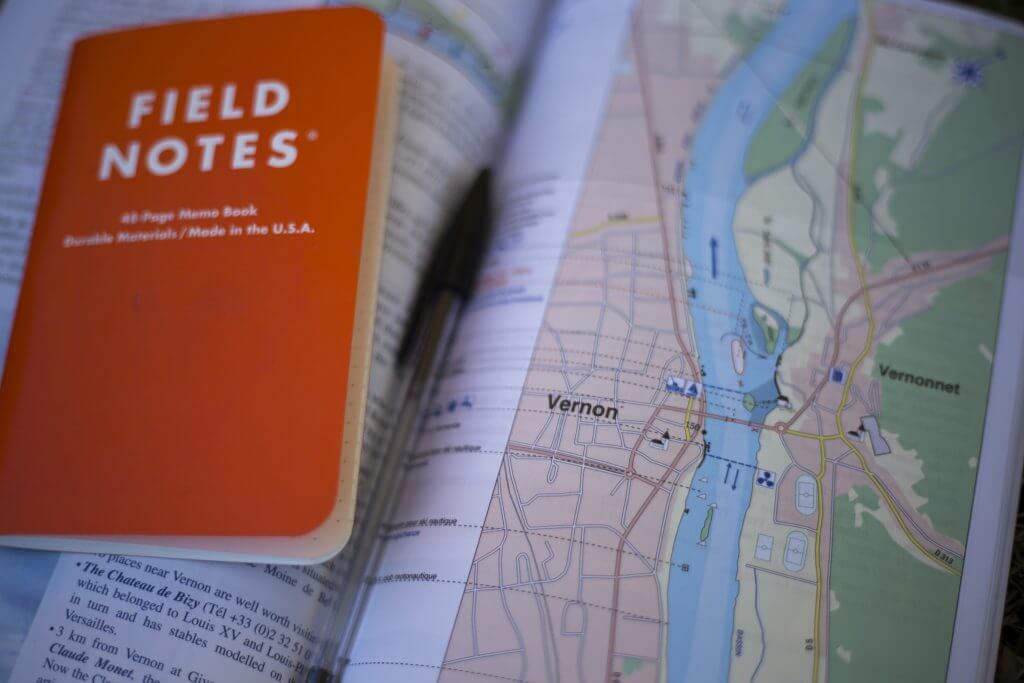
Departure from Vernon, halfway between Paris and Honfleur.
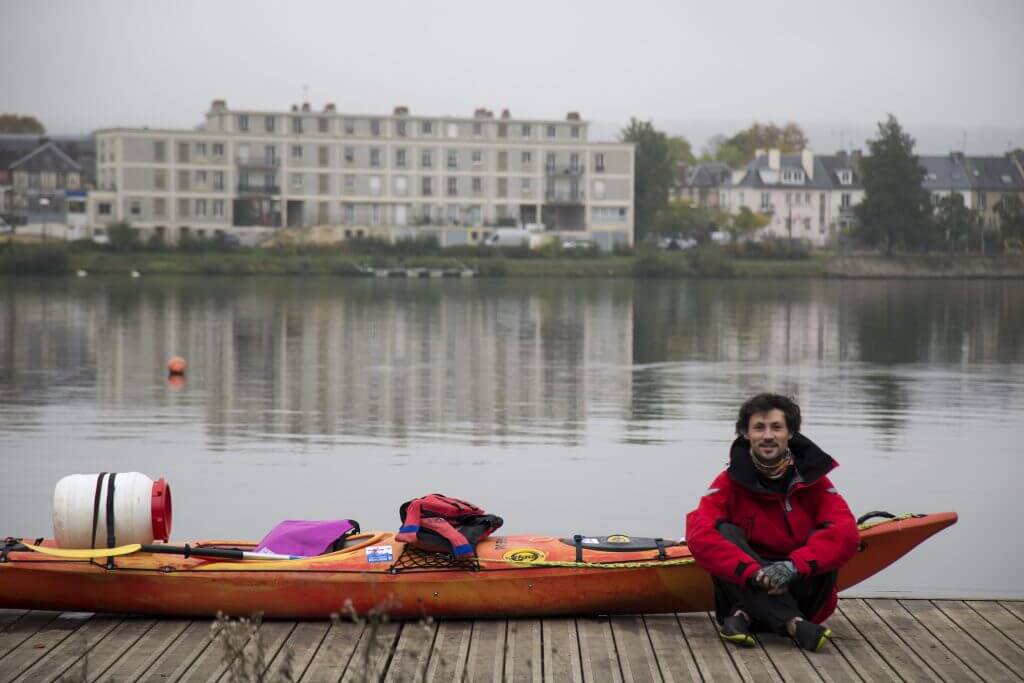
I have (very) little experience of kayaking, but I’m counting on a calm Seine and mild temperatures to tame this new mode of travel.
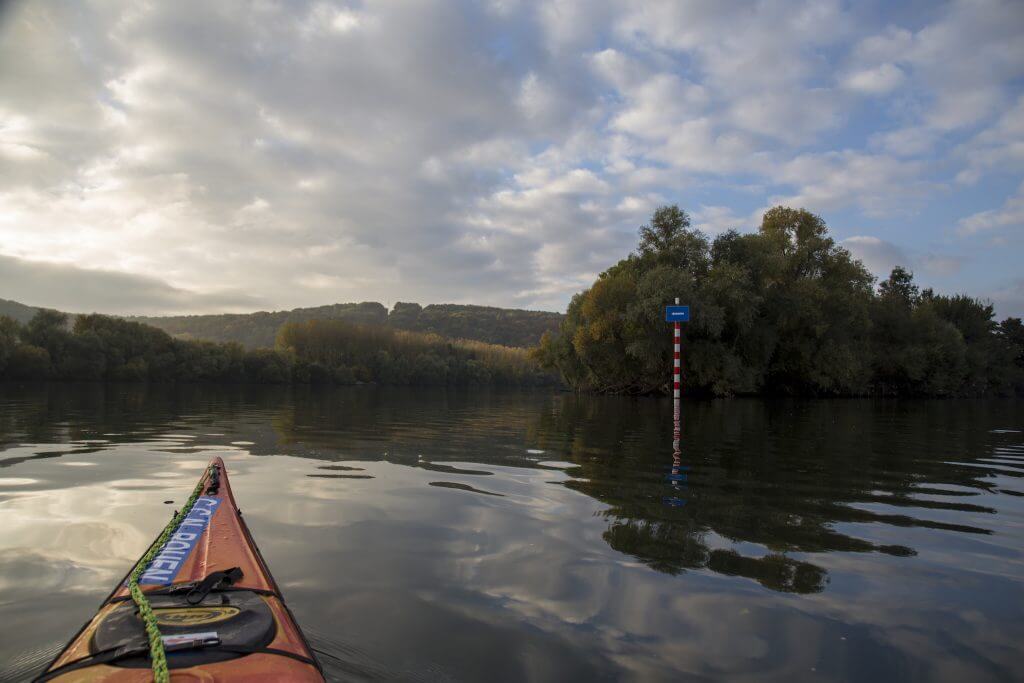
I’m gaining in serenity as the miles go by on the water. The Seine is a major commercial transit route. When kayaking, you have to be constantly on your guard to avoid crossing the path of a barge. Navigation on the river is regulated by signs and signals, and I often use the dead arms, free of all traffic (like the one on the right).
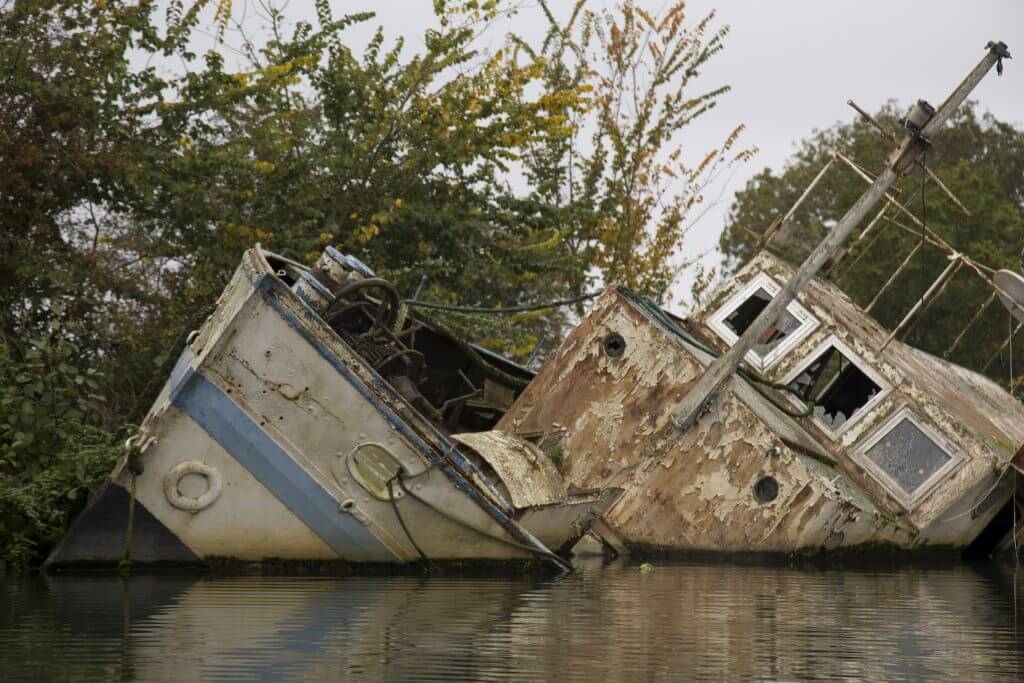
There are many wrecks on the banks of the Seine. Some in a more advanced state of disrepair than others.
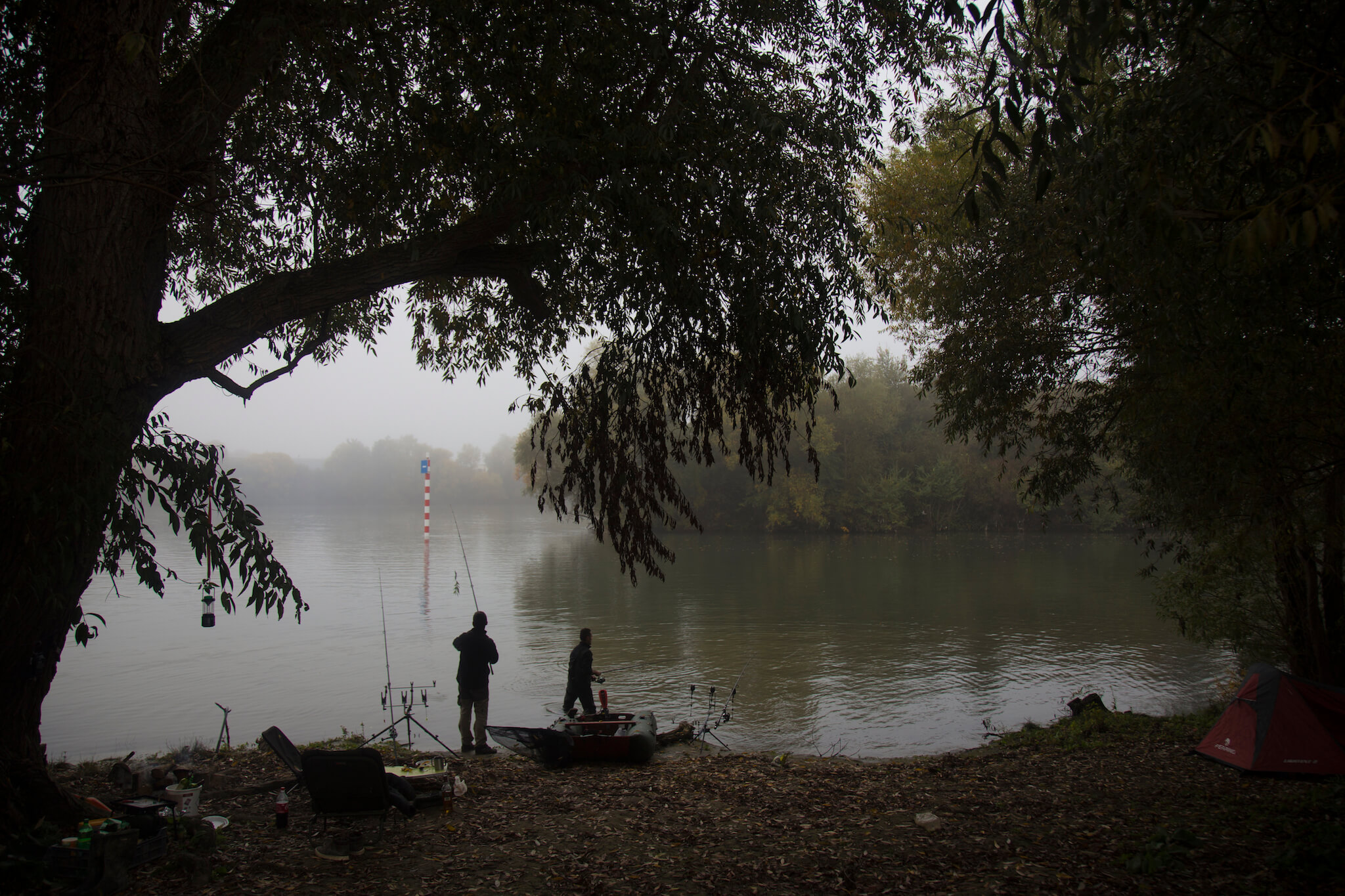
On my first night, I meet a couple of “carpistes” (carp fishermen). As I passed by in mid-afternoon, the two friends spontaneously invited me ashore to share a beer and a sausage. Once a month, they get together to set up 6 rods and camp on the banks of the Seine for 48 hours. Sitting in comfortable camp chairs, they explain their passion for carp fishing. They can weigh up to 15 kg, and you have to fight to catch them, because once the fish has bitten, it tries to run away. You then have to jump into your boat to pull it out of the water, sometimes in the middle of the night. Their rods are all alarmed and ring when a fish is on the end of the line… Finally I pitch my tent on their camp site. I wanted to do a long-distance kayak trip this day, but it was a failure. But I did well to let myself be carried away by the kindness and good humor of these two fishermen. Late into the night, we chat around a big fire.
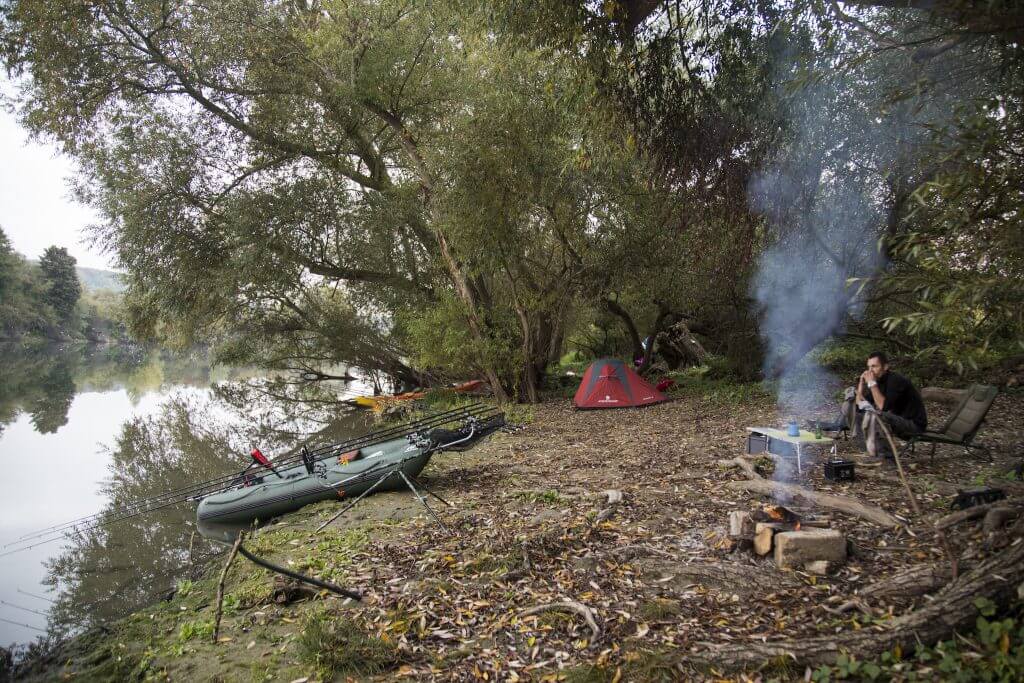
Our camp. My fishing friends are very well equipped, with a large tent, cots and even a small heater. Contrast that with my little 1.5 kg red tent!
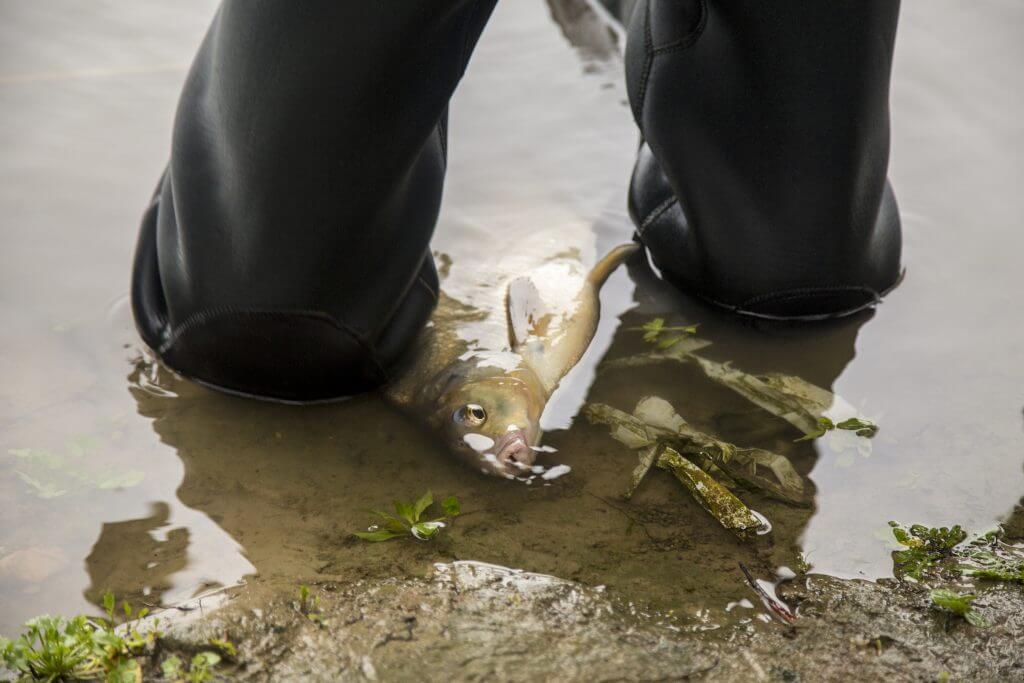
No carp, but a pike-perch! Once the hook is removed, the fish is released back into the water. Carp fishing is practised for pleasure and sport, and the fish are never eaten.
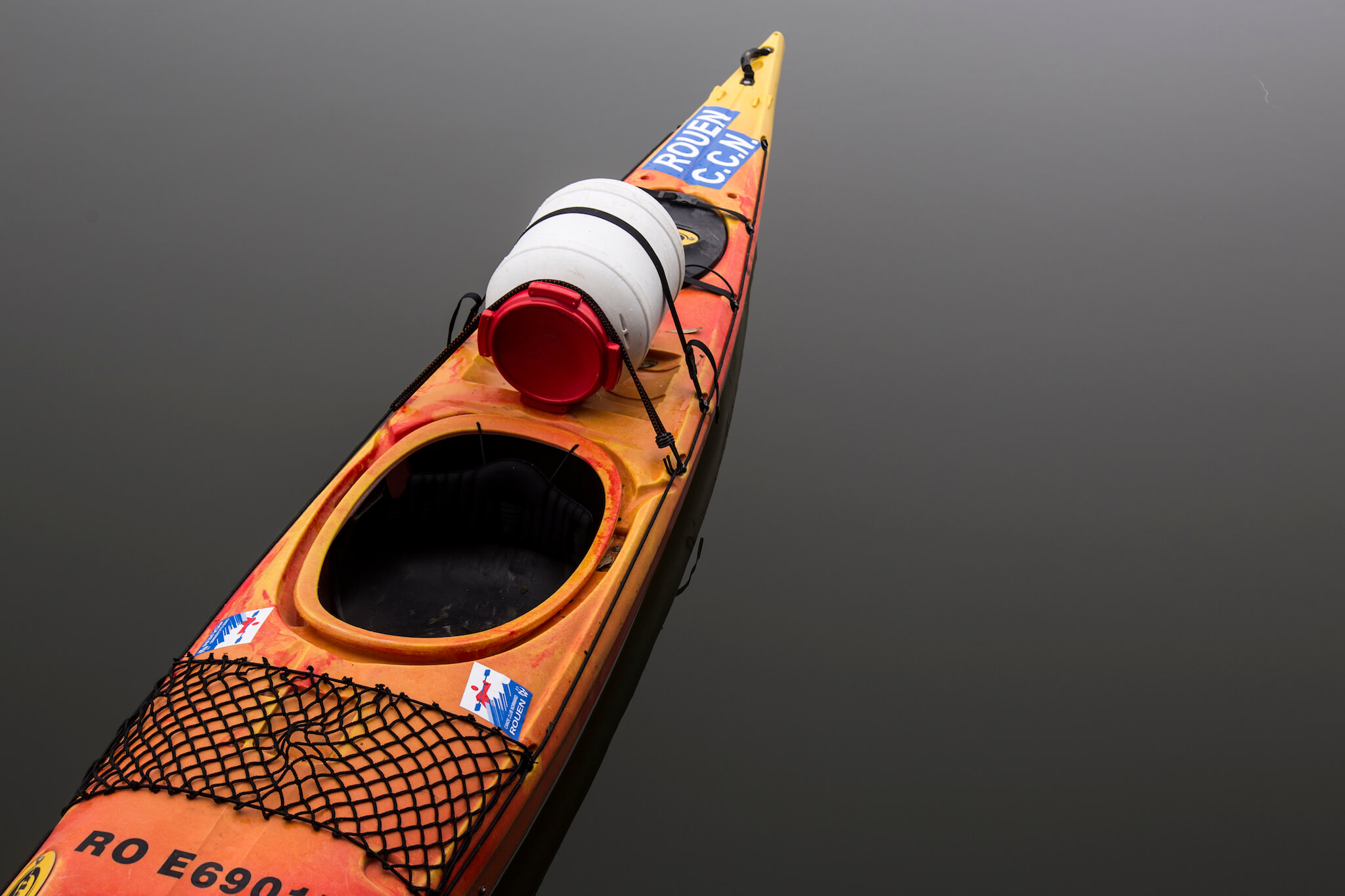
The sea kayak was kindly lent to me by the Club de Canoë Normand de Rouen, which made organizing my adventure a lot easier. On the kayak, a storage compartment at the bow and stern allowed me to store my food, water and camp gear. In a watertight canister attached to the kayak, I stored my sleeping bag and the things that had to stay dry at all costs. As for my camera, I kept it in a waterproof bag between my thighs.
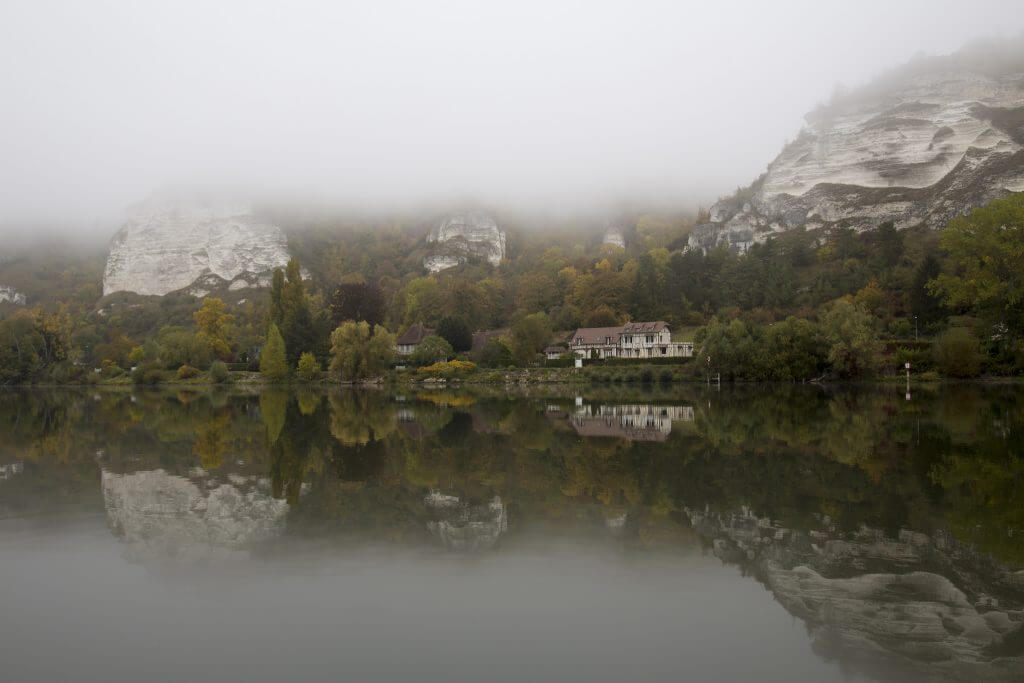
The morning mist that fills Les Andelys, combined with the limestone rock reflected in the calm river, lends the area a supernatural atmosphere.
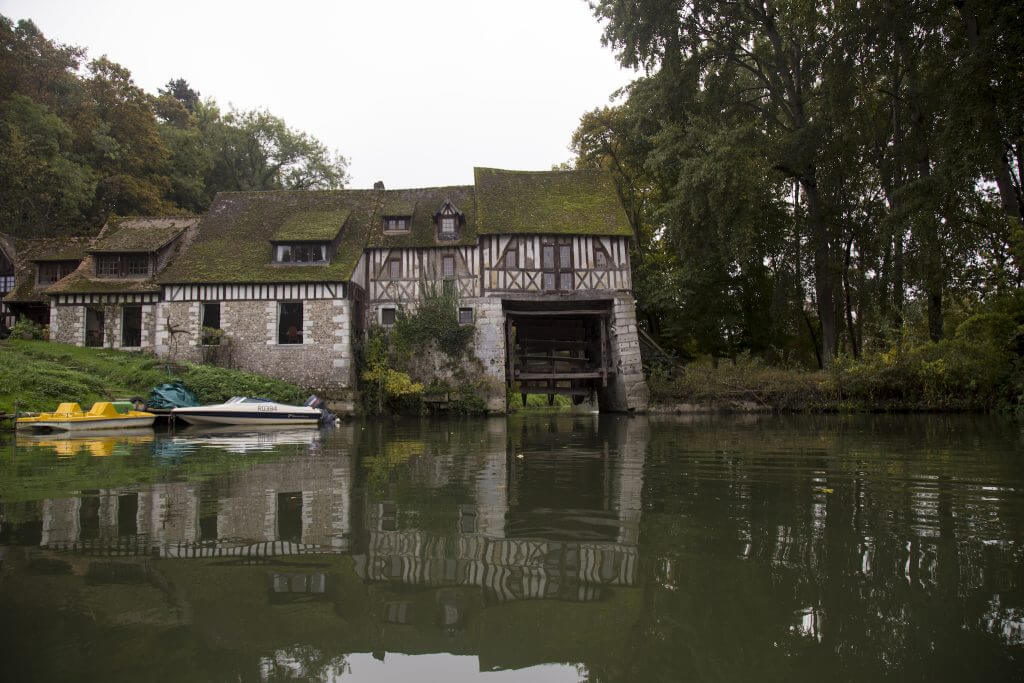
Built at the end of the 12th century, the Moulin d’Andé supplied the garrison of the Château Gaillard in Les Andelys. Today, the Moulin d’Andé is used as a residence for creative artists from all horizons, and as a venue for high-quality cultural events.
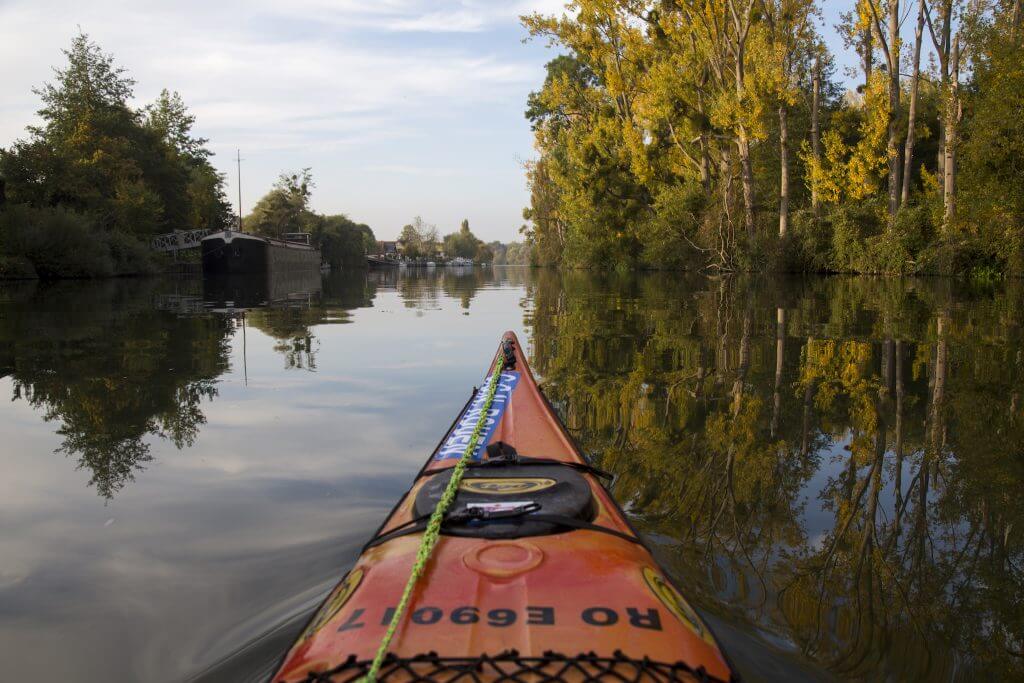
As the sun sets, I start looking for a place to bivouac.
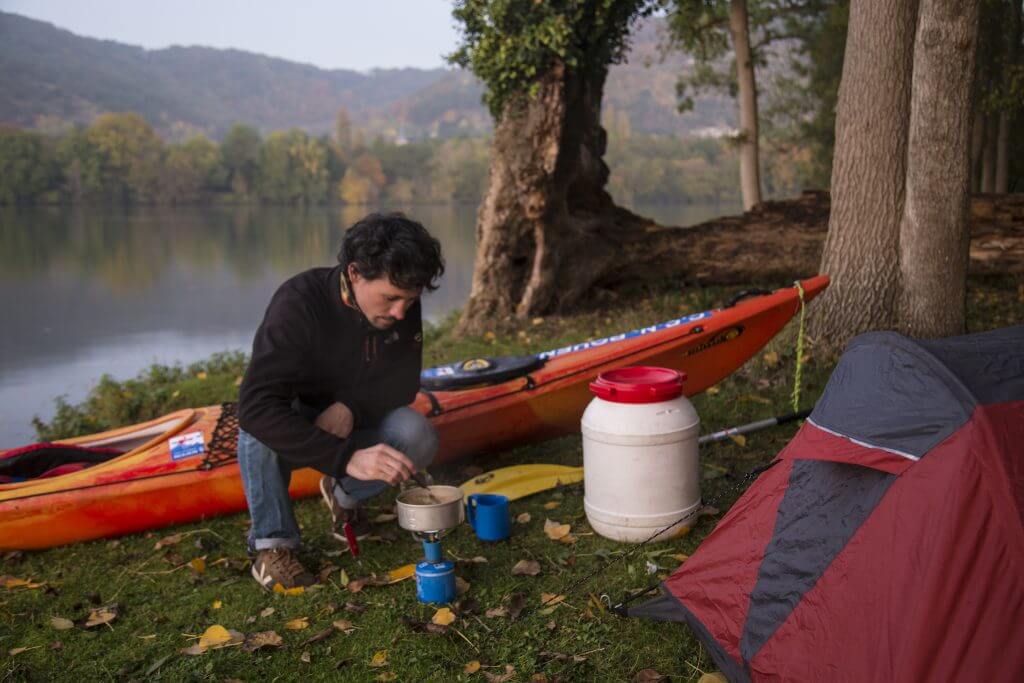
Like every evening, I set up camp to spend the night. But this time I’m on an island! A child’s dream.
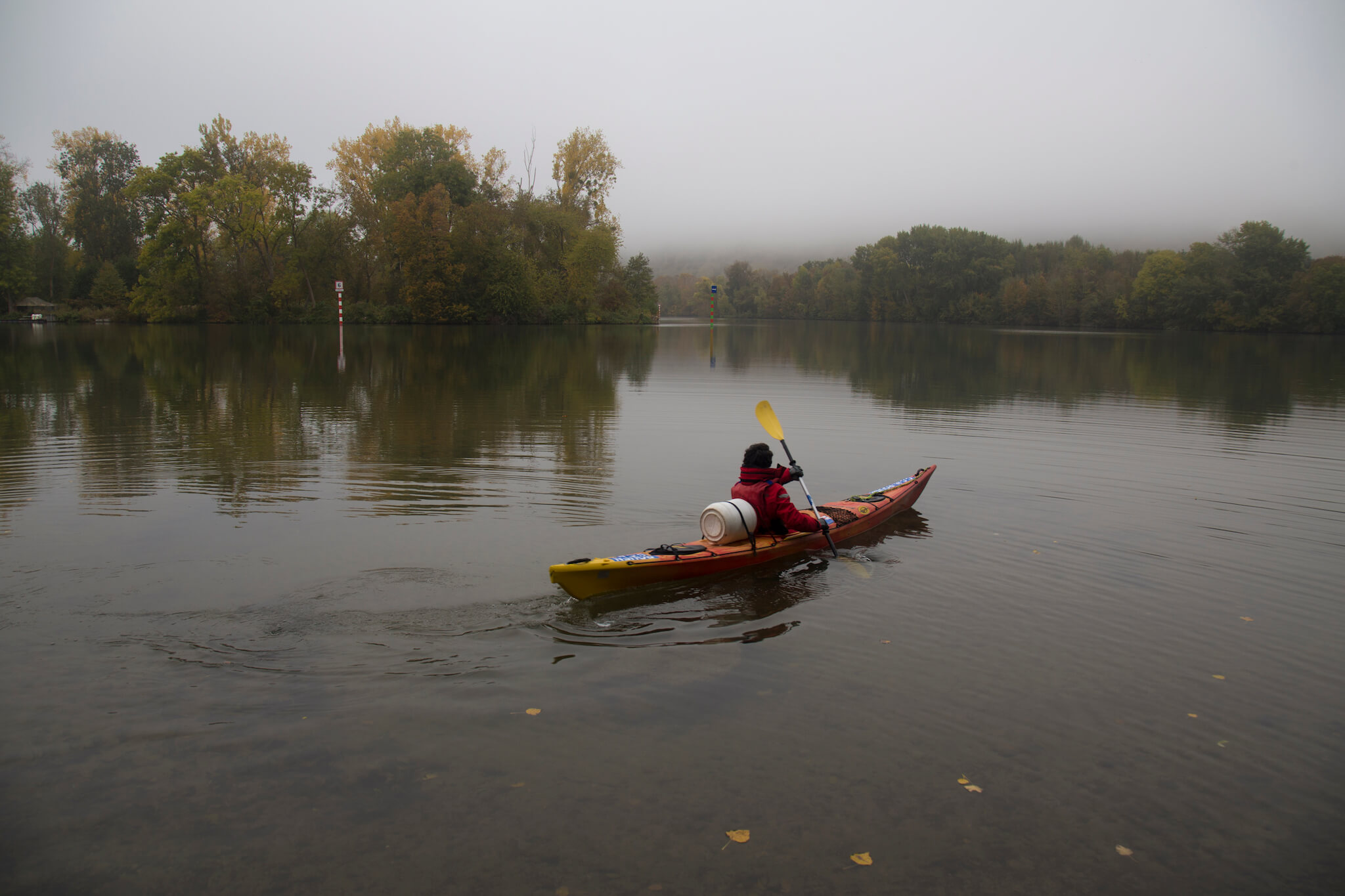
Every morning, I repeat the same gestures. Stow the sleeping bag and my gear in the watertight container, fold up the tent and stow my gear in the kayak. Fasten the canister to my boat, close the little hatches leading to the storage compartments, put on my watch jacket before giving my first paddle stroke of the day.
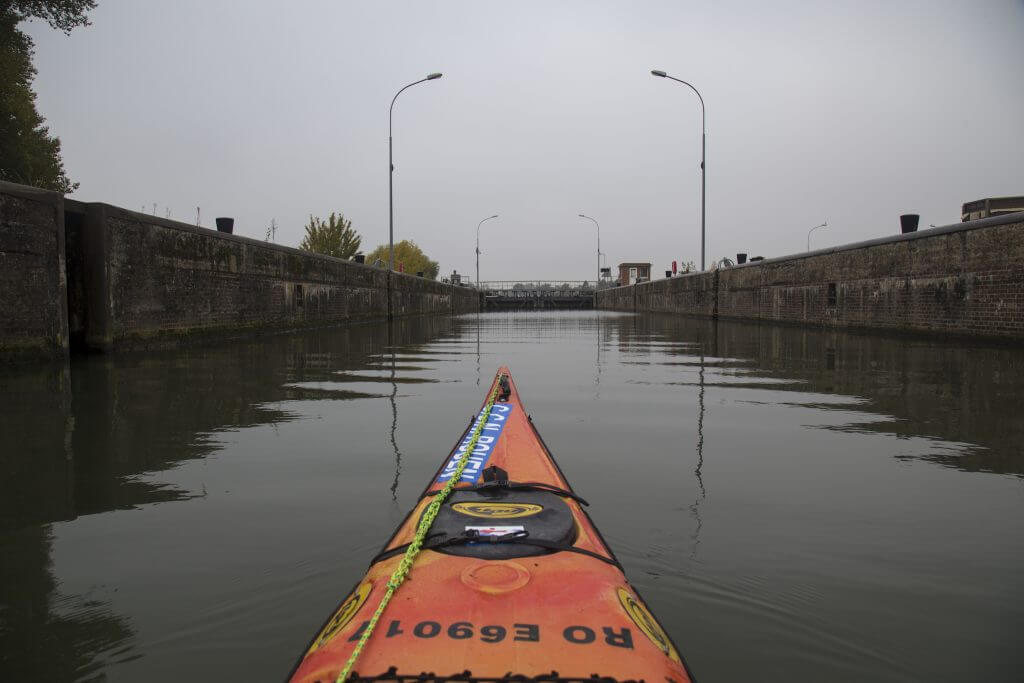
160 kilometers from the mouth of the Seine, I come across my second lock, at Amfreville-sous-les-Monts, next to the Poses dam.
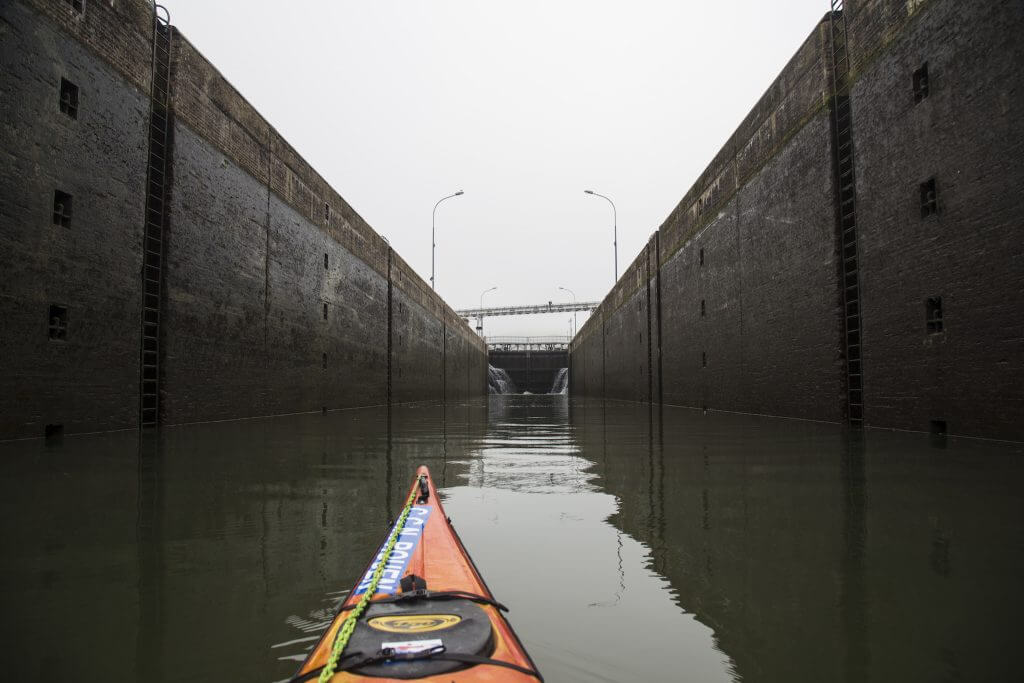
It allows 40 boats of all tonnages to pass through every day, i.e. almost 15,000 boats a year. Kayaking without permission to pass, I had to use a great deal of diplomacy to continue on my way, saving myself the hassle of carrying my boat for several kilometers.
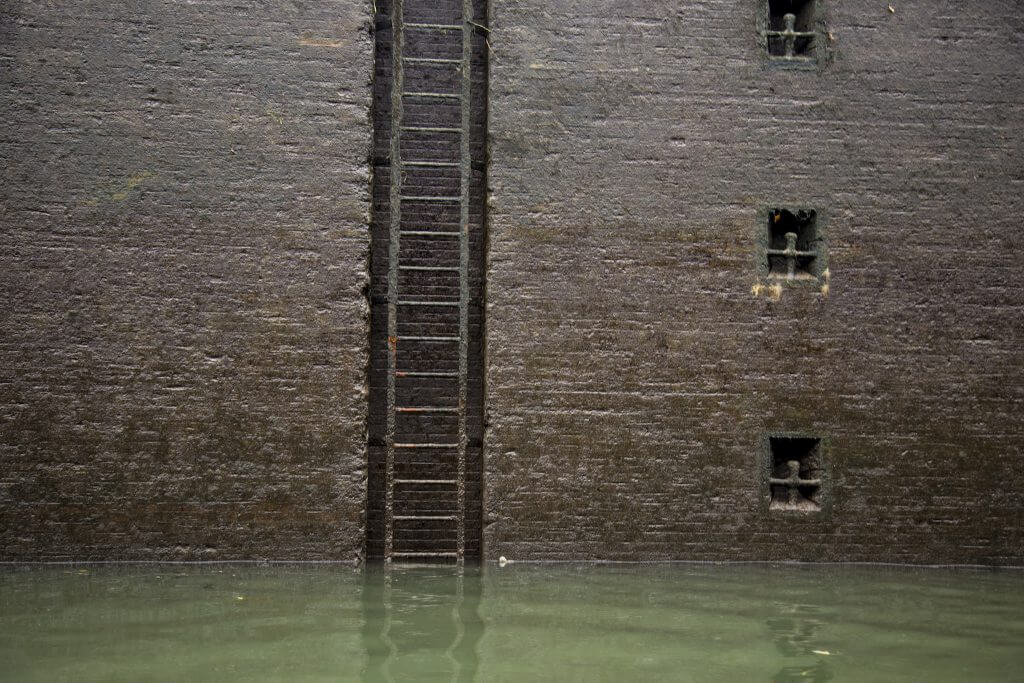
As it empties, the lock reveals its slimy bowels of algae and silt.
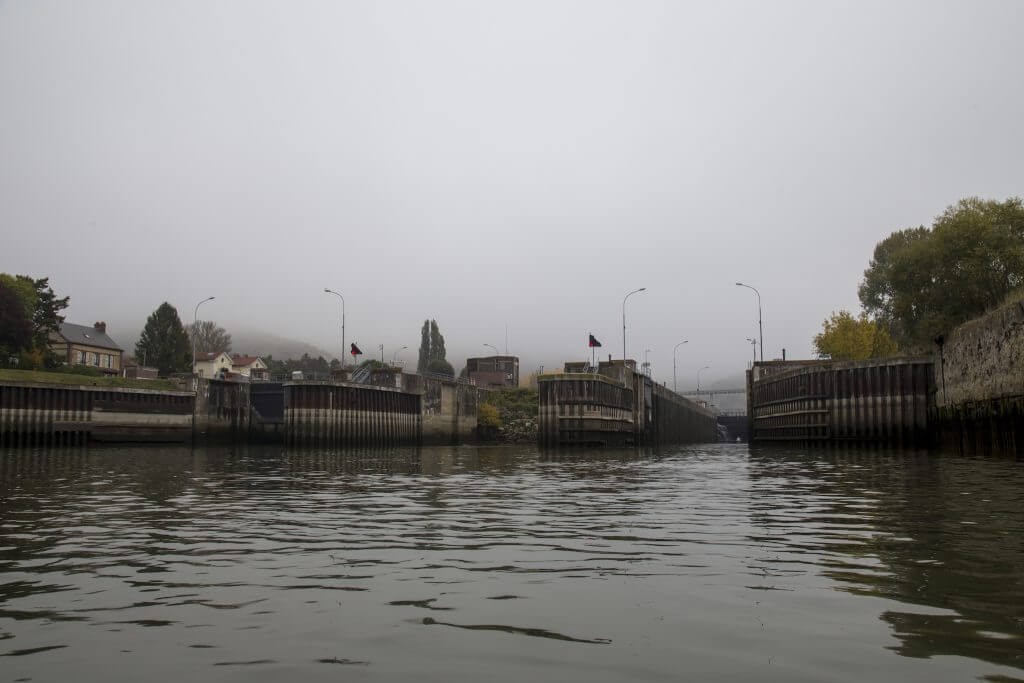
With the last lock behind me, nothing now stands in my way to the sea! Except for the Rouen crossing, which is off-limits to kayakers, and which worries me a little…
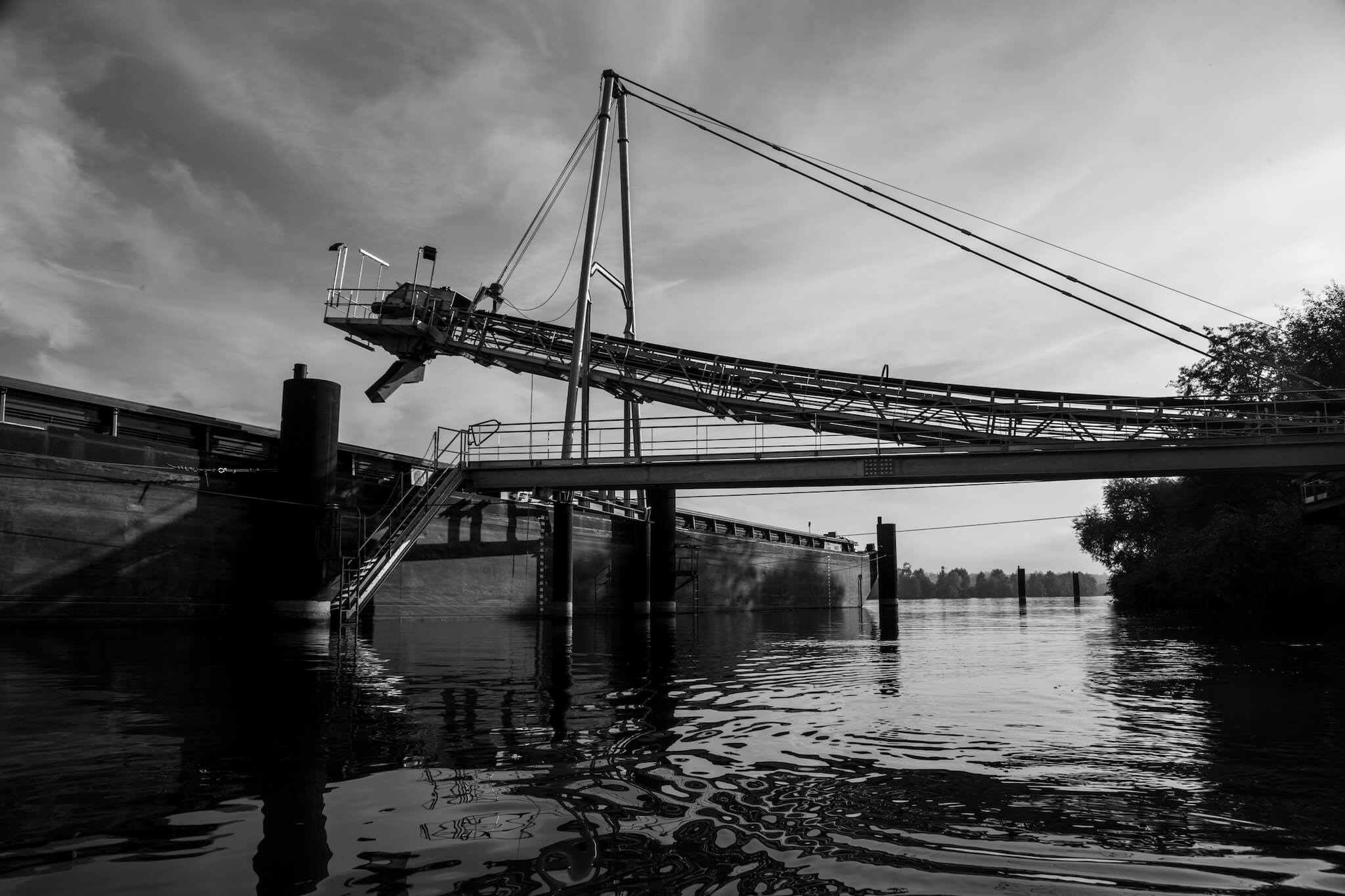
Along the way, I passed wharves where sand and other raw materials were loaded onto transport barges.
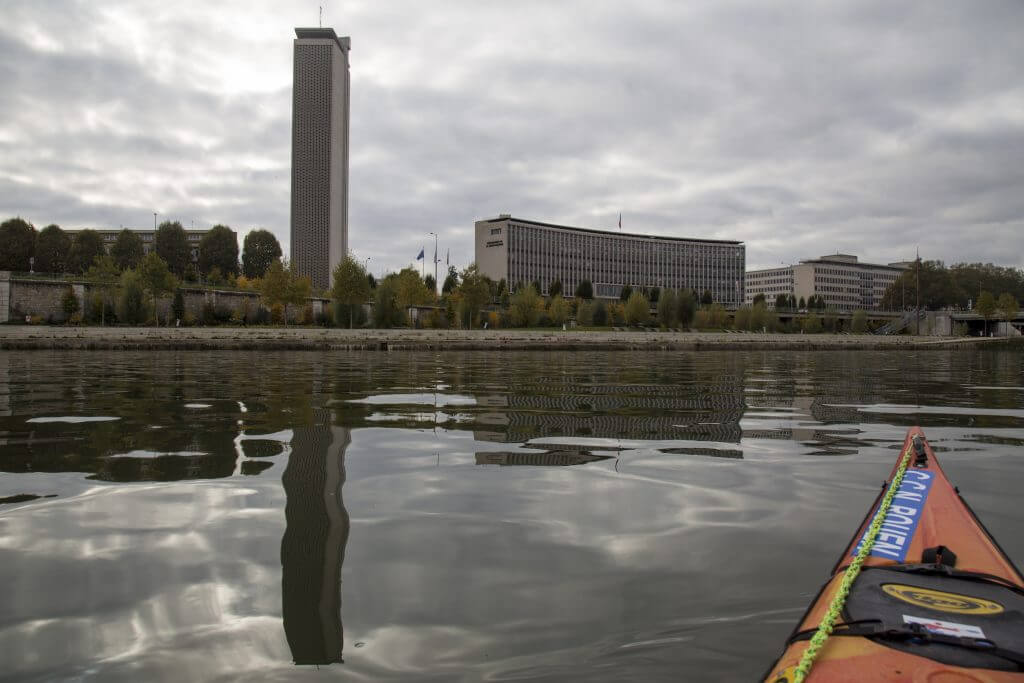
I enter Rouen after crossing the Pont Corneille. Kayaks are not allowed up to the Pont Gustave-Flaubert. Still, I try my luck, crossing as quickly as I can and stopping for a moment to photograph Rouen from the Seine. Here, the Archives Tower and the headquarters of the Seine-Maritime département.
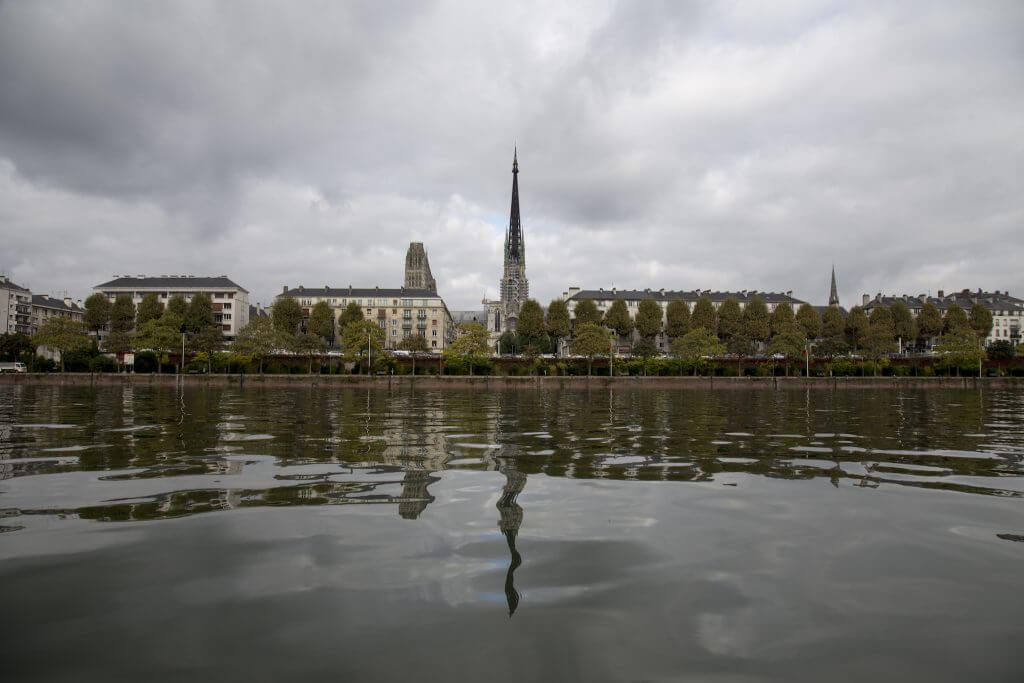
A few metres further on, on my right, the city’s most famous monument: Notre-Dame de Rouen Cathedral.
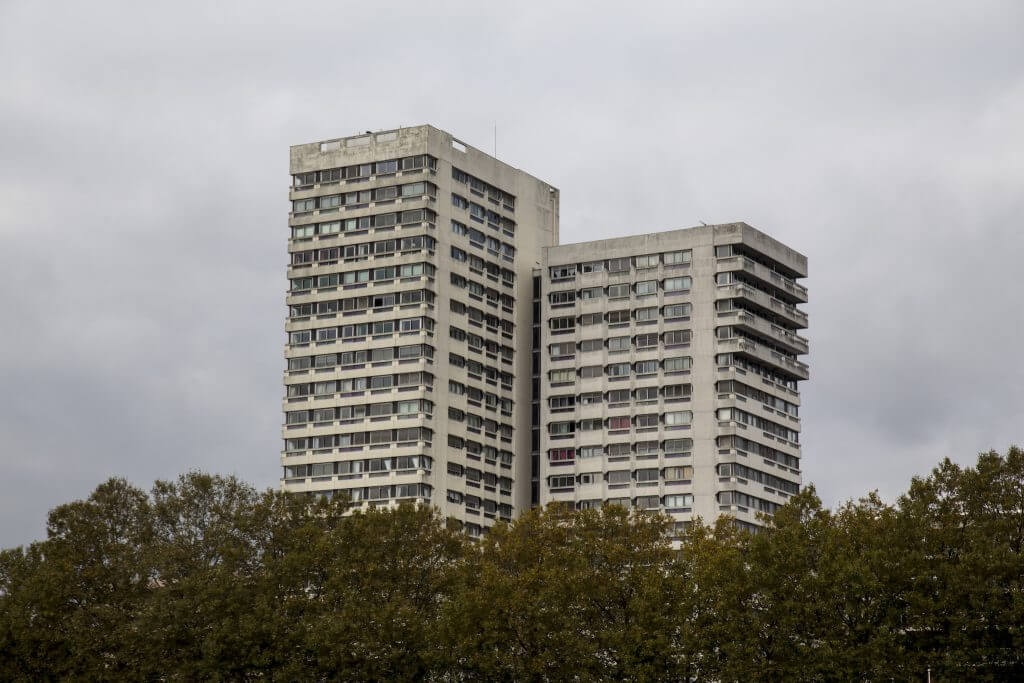
Rouen.
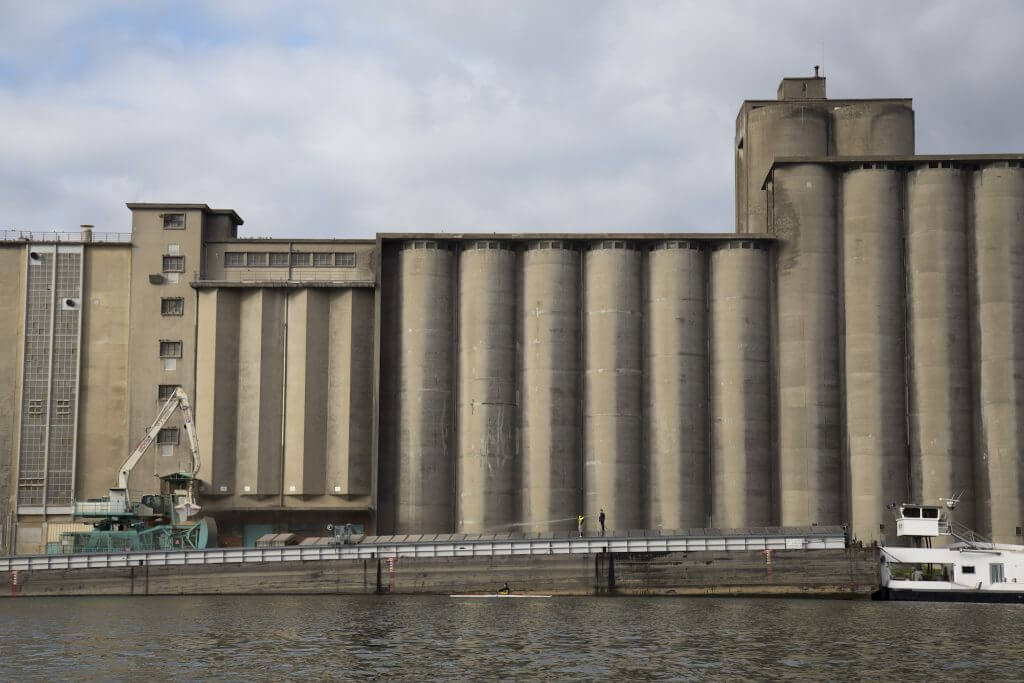
Sénalia grain silos in Rouen.
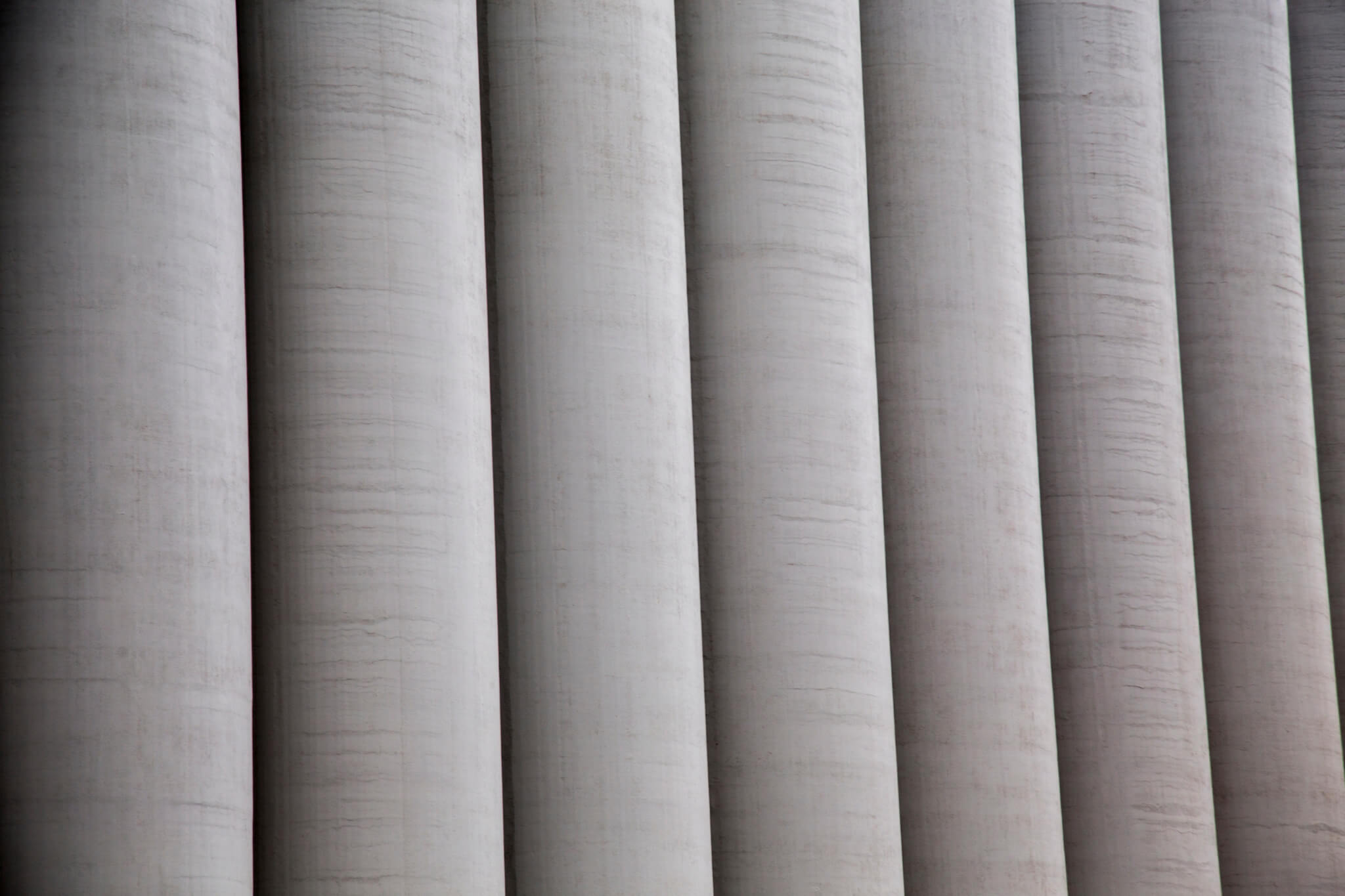
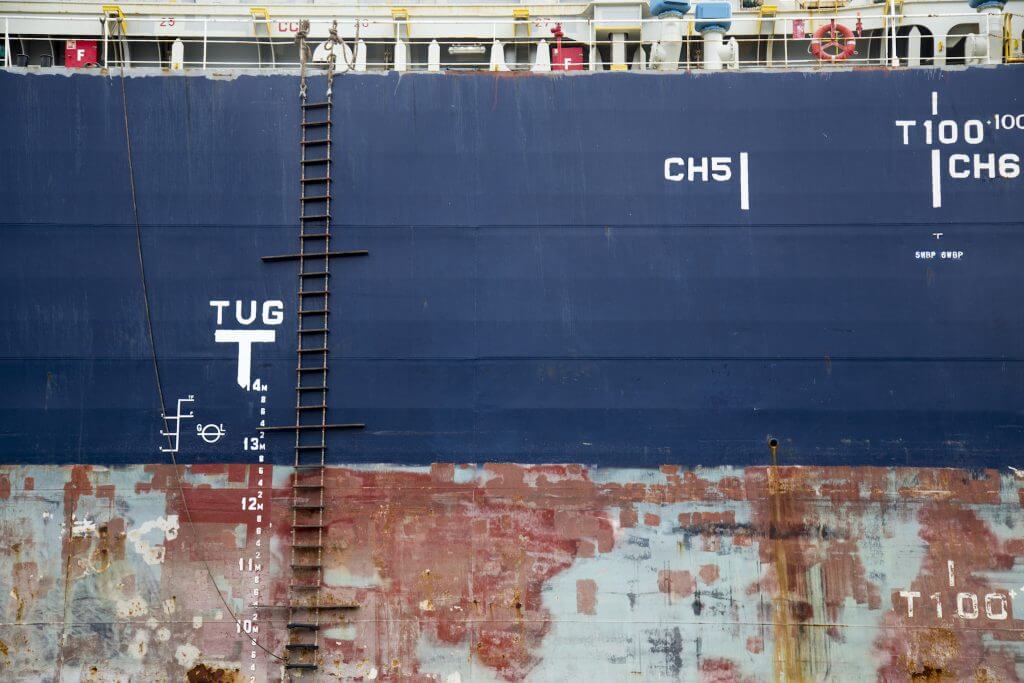
Although the autonomous port of Rouen is located 80 kilometers by boat from the estuary (i.e. 6 hours’ sailing), it can accommodate very large vessels (up to 292 meters long and 150,000 tons).
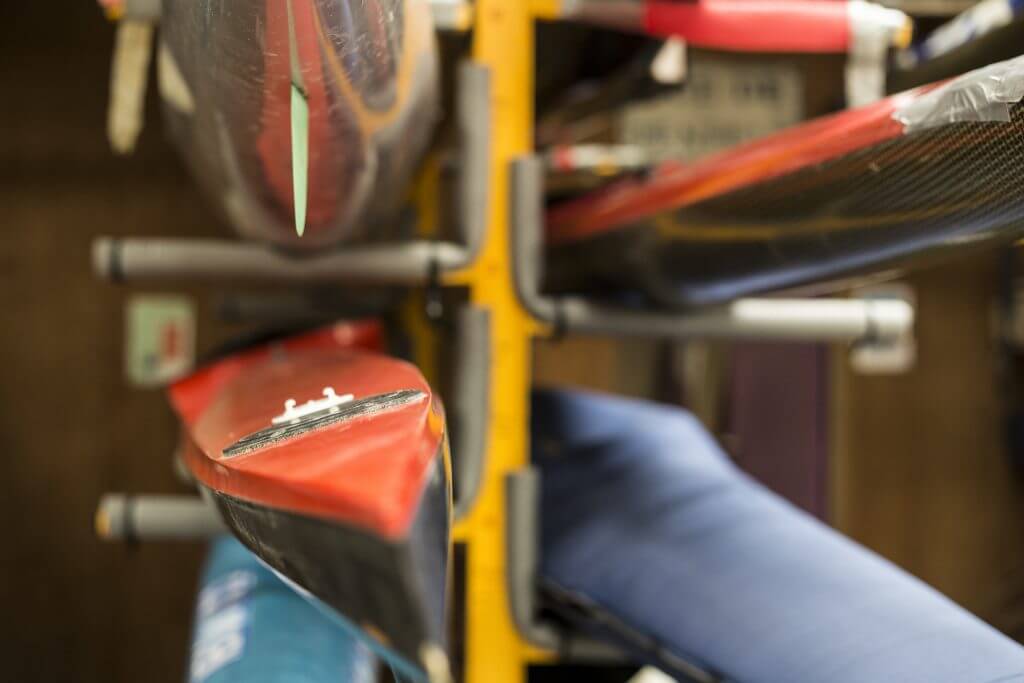
Which explains why kayaks and other light craft are not allowed near these behemoths. In the end, I crossed the few kilometers of Rouen without a hitch.
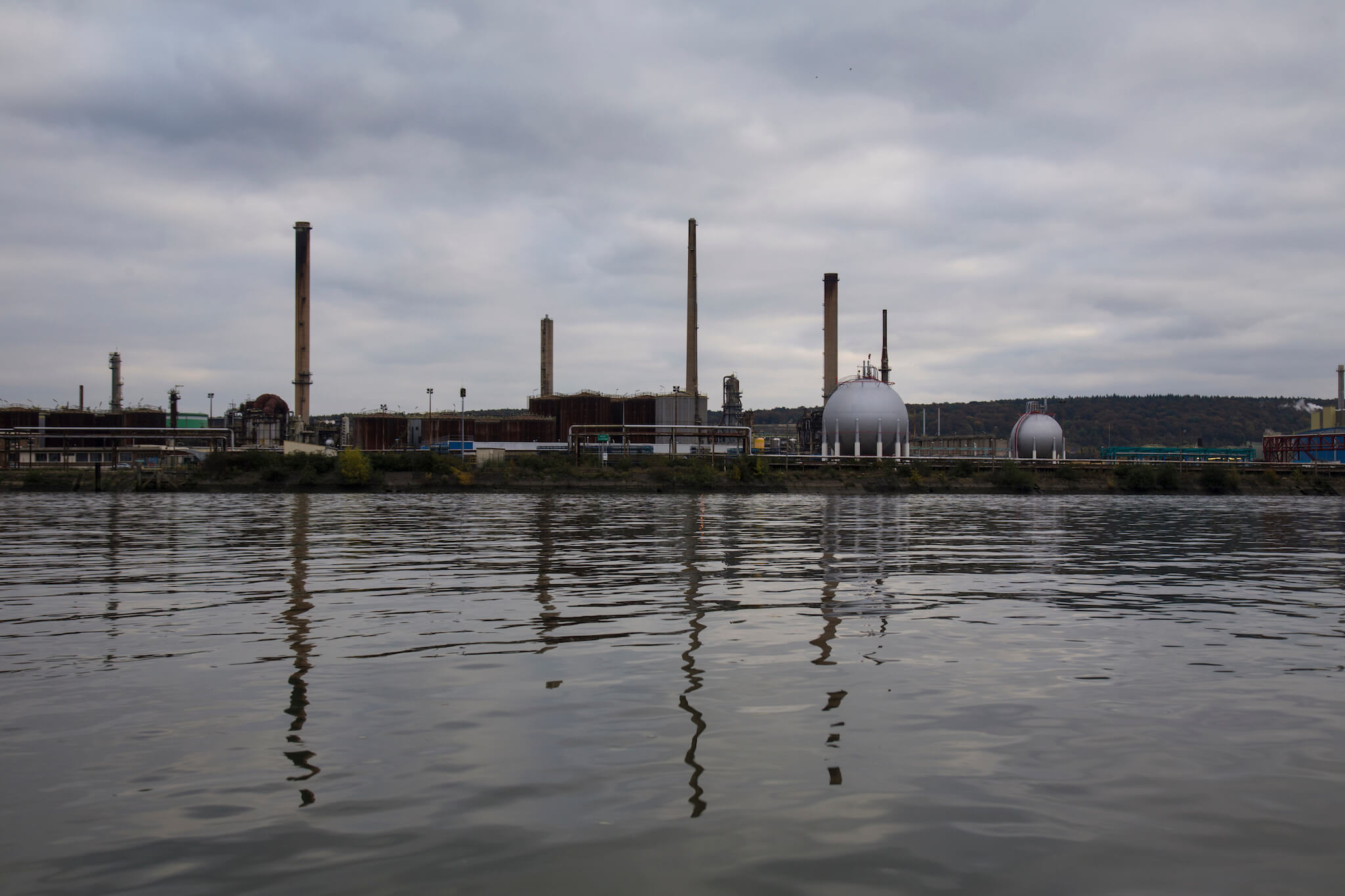
The exit from Rouen is marked by an industrial landscape, such as the former Petit-Couronne refinery, and by a tidal Seine. As I’m exhausted going upstream on a rising tide, I decide to leave only on a falling tide, which turns out to be quite restrictive for navigation schedules. I have to leave early in the morning, stop until the tide comes in, and leave again in the early afternoon on the ebbing tide until evening.
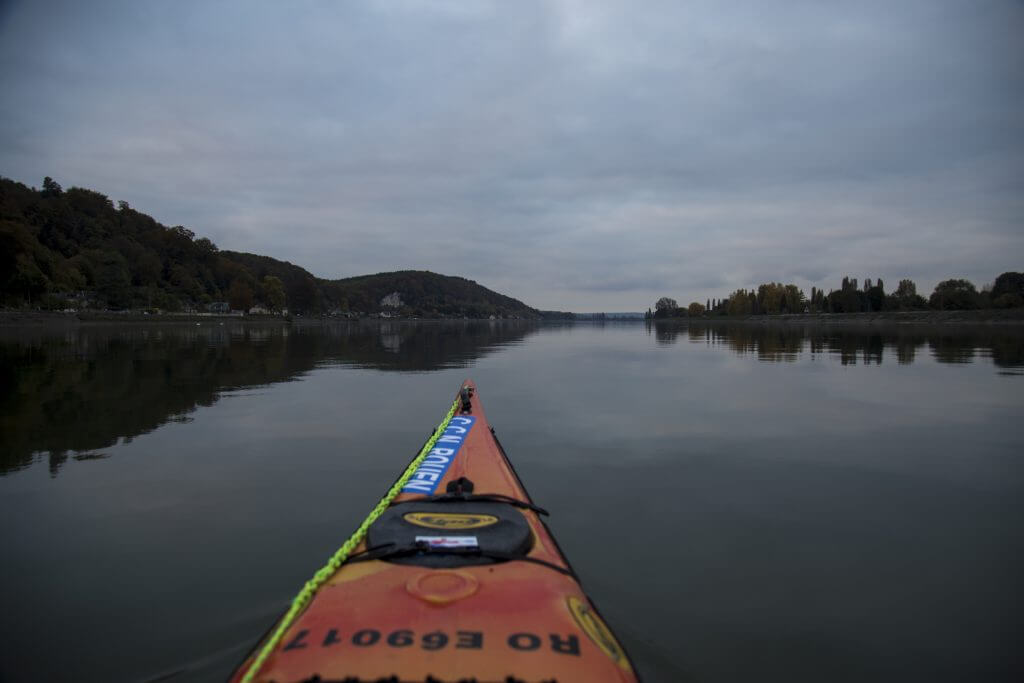
I find myself in a tricky situation. Since I passed Rouen, the Seine has widened and the river banks have become high dykes, making it difficult for me to disembark. By nightfall, there’s not a slipway, quay or pontoon in sight to stop me…
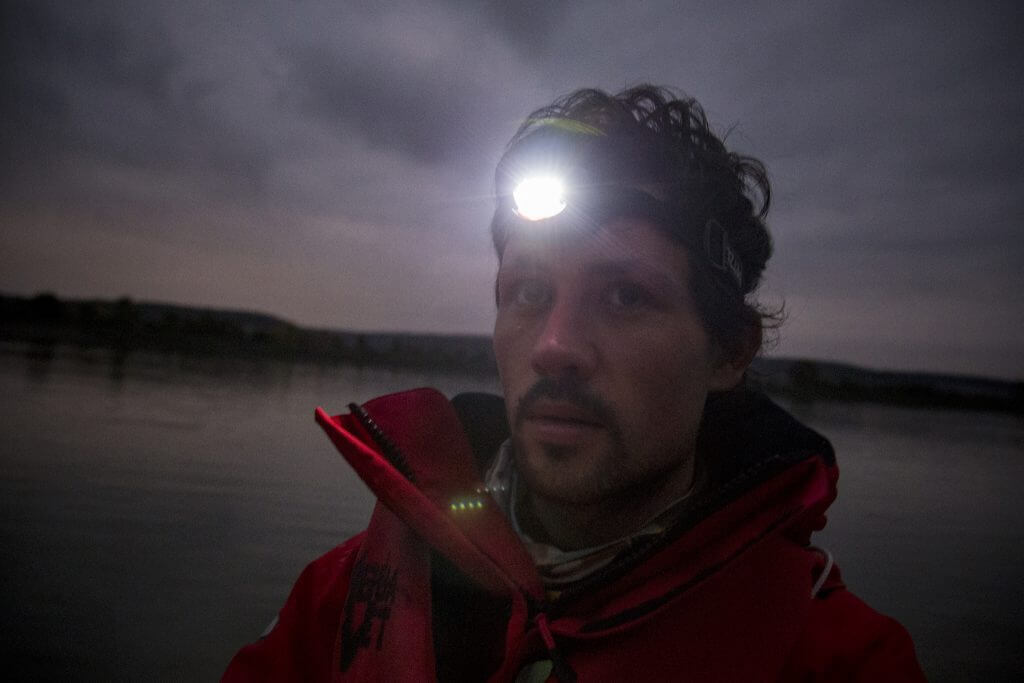
Using my headlamp, I continue paddling, staying close to the shore so as not to disturb the traffic of the long barges speeding through the silent twilight.
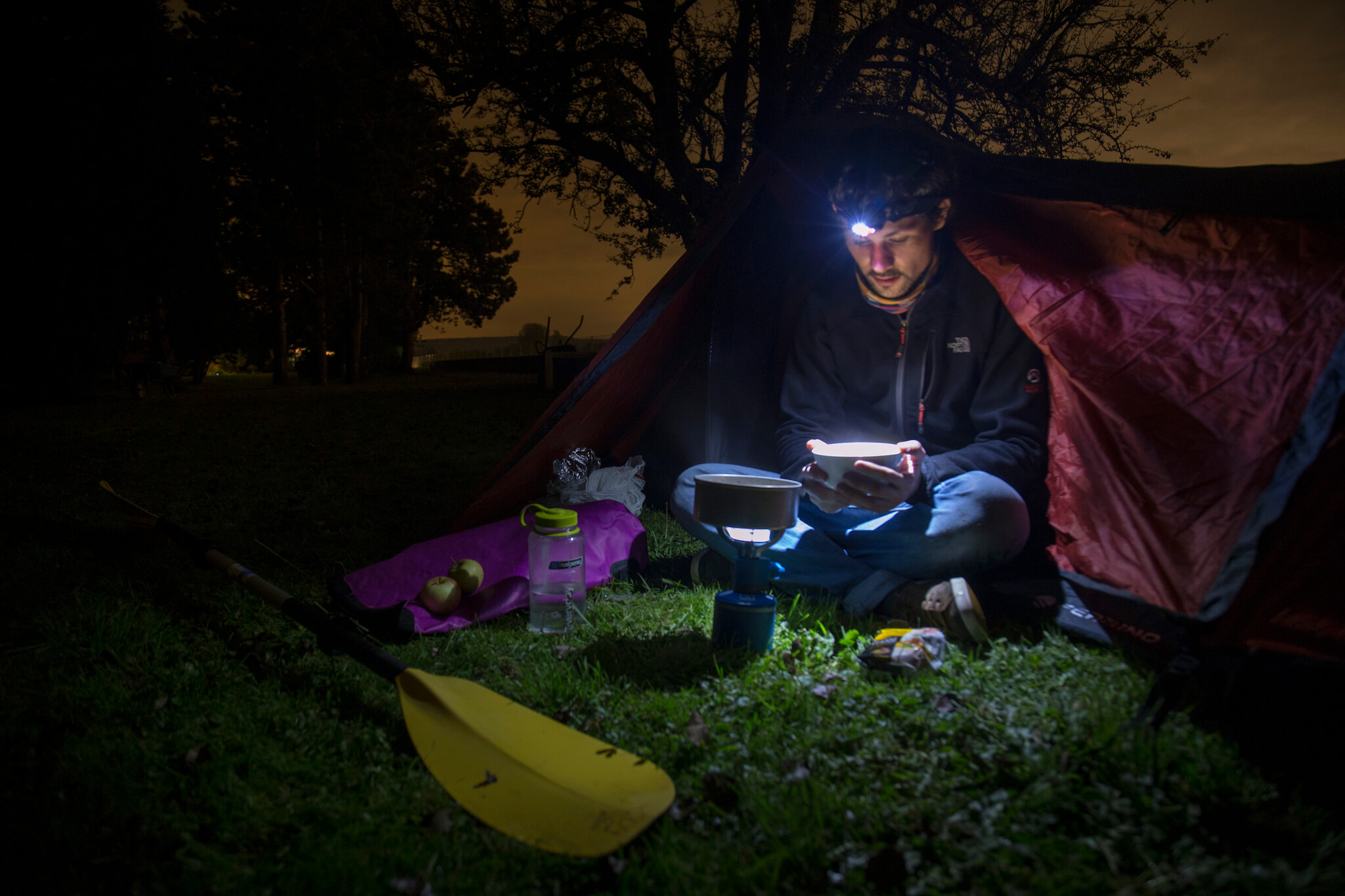
It would have been unreasonable to continue sailing alone in the night for much longer. After finding a small staircase dug into the dyke, I make my way ashore as best I can and finally find shelter in the garden of strangers. Tired, I set up camp and to my surprise my host very kindly brings me a hot homemade soup and apples from his garden.
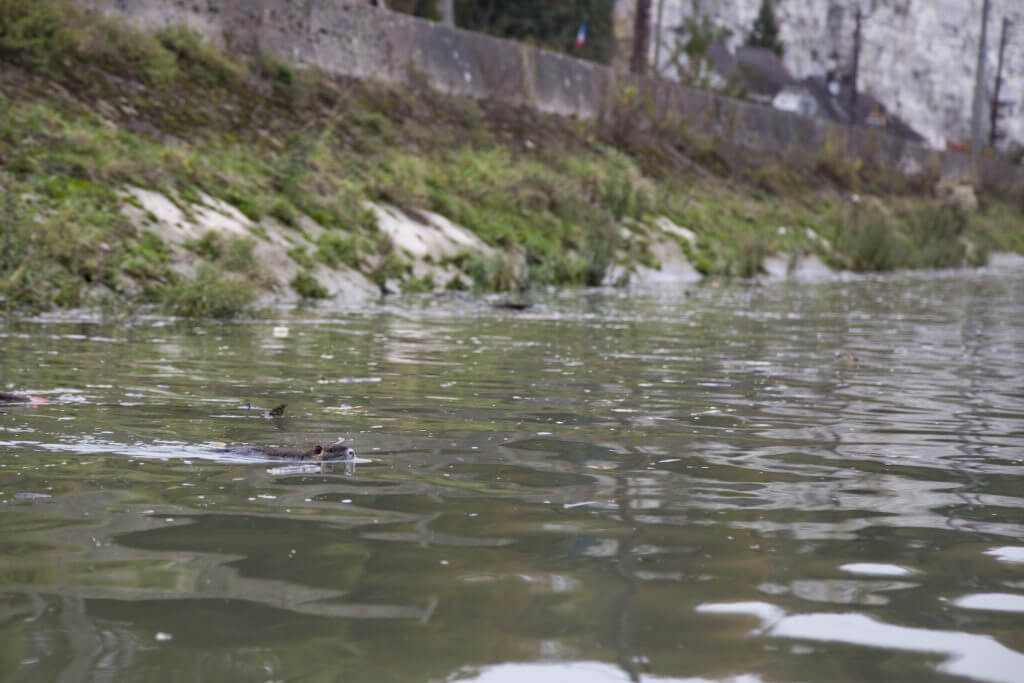
A coypu swimming on the surface of the water. Numerous on the banks of the Seine, they are classified as a “nuisance species”. In particular, they degrade riverbanks, gradually eroding them and weakening the foundations of hydraulic structures with their network of tunnels.
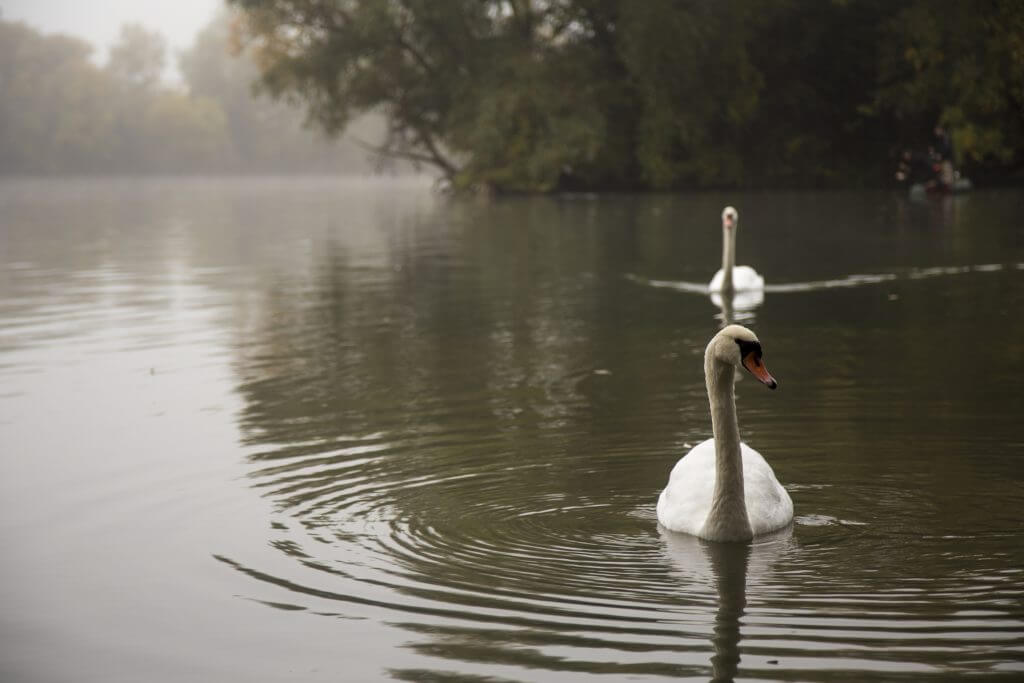
Every day, I pass swans on the Seine. They are among the largest flying birds, weighing up to 15 kg and measuring around 1.50 m.
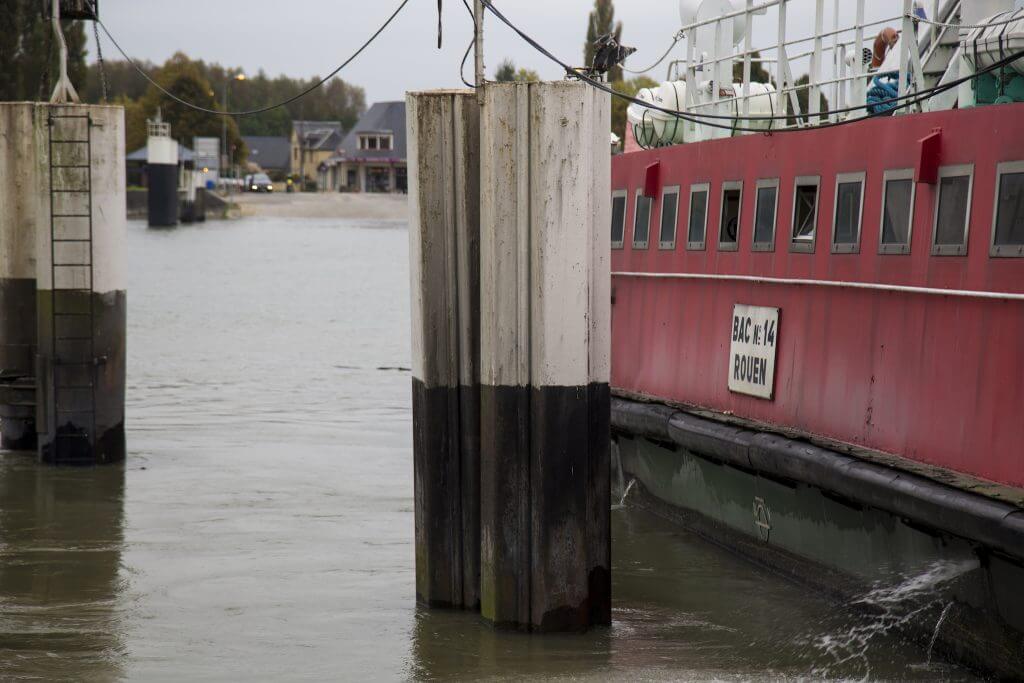
There are few bridges between Rouen and Le Havre, apart from those at Brotonne, Tancarville and Normandie. Ferries make up for this absence and contribute to the liveliness of the river, but they require great caution on the part of the navigator.
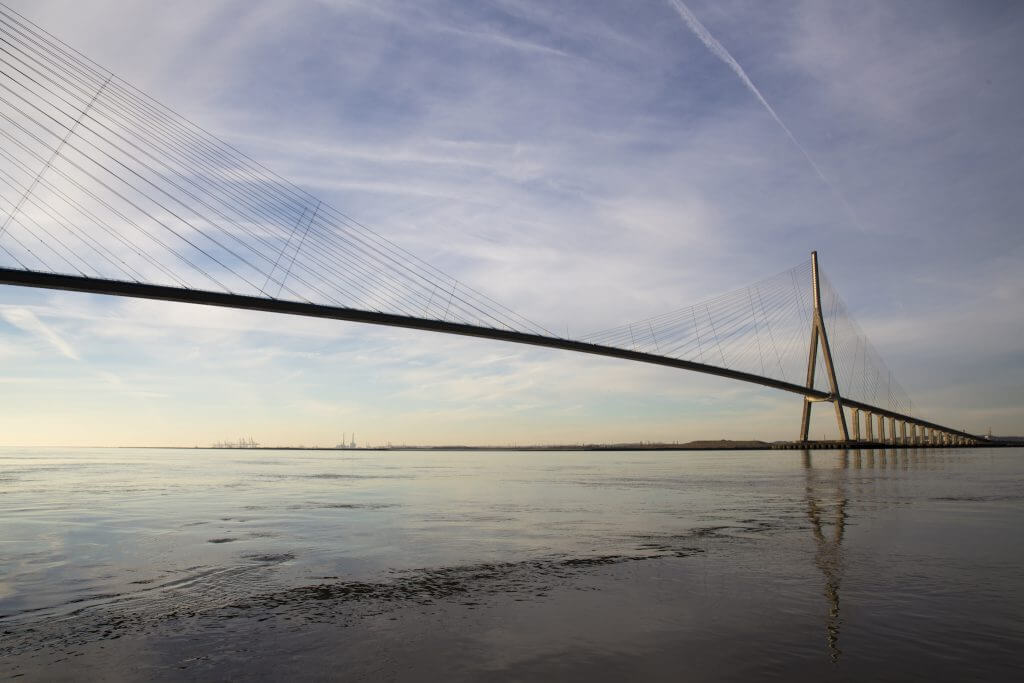
The Pont de Normandie, over 2 kilometers long, is a cable-stayed bridge spanning the Seine estuary between Le Havre and Honfleur.
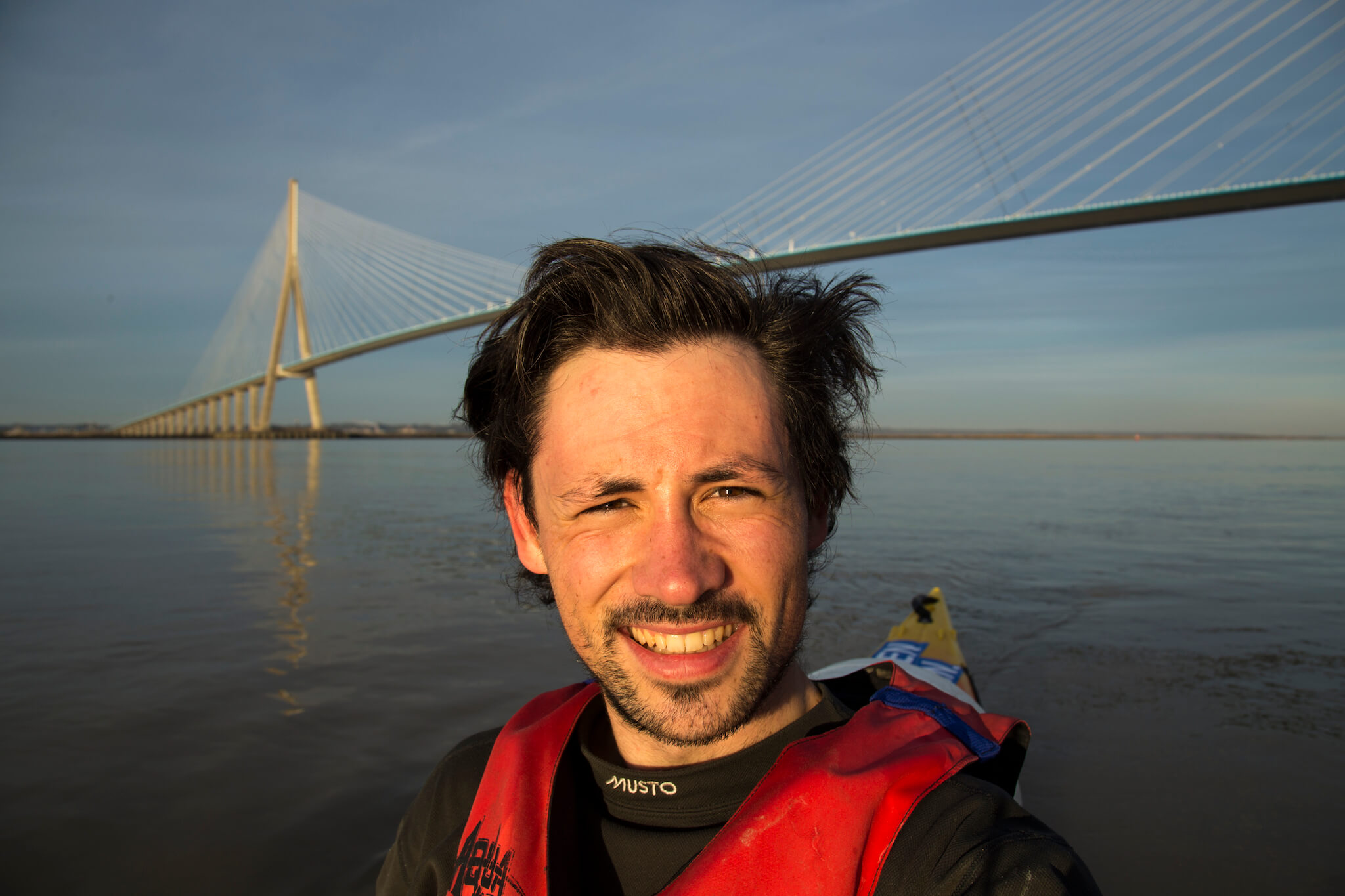
Passing under the Pont de Normandie marks my arrival in La Manche and brings to an end my 220-kilometer adventure on the Seine by kayak.
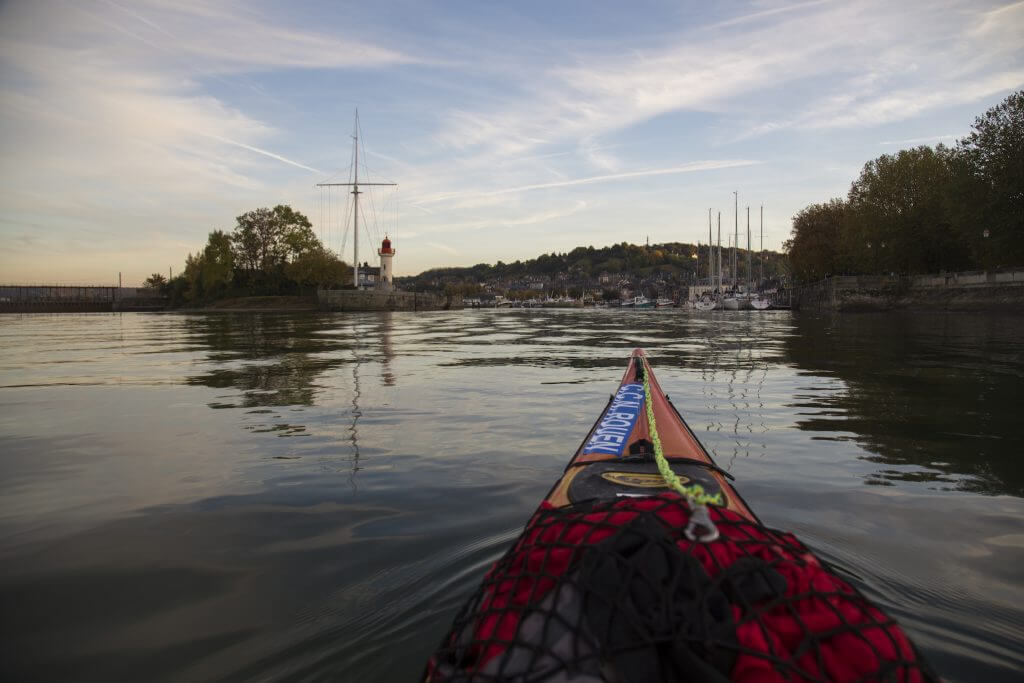
I arrived in Honfleur just after passing through the town’s lock, located on the south bank of the Seine estuary. Entries are only made at round hours, but the lock-keeper had spotted me paddling in the distance and waited 15 minutes before closing the lock behind me, saving me an hour’s wait in front of the gate in the rising tide.
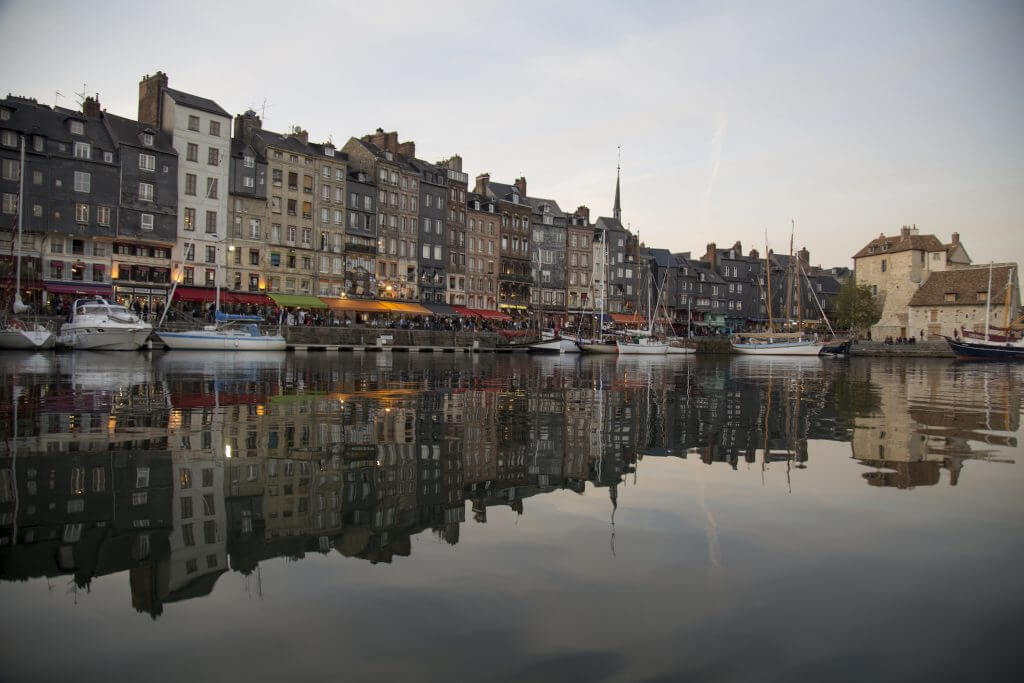
The Vieux Bassin, with its slate-covered facades reflecting in the water, is an icon of Honfleur.
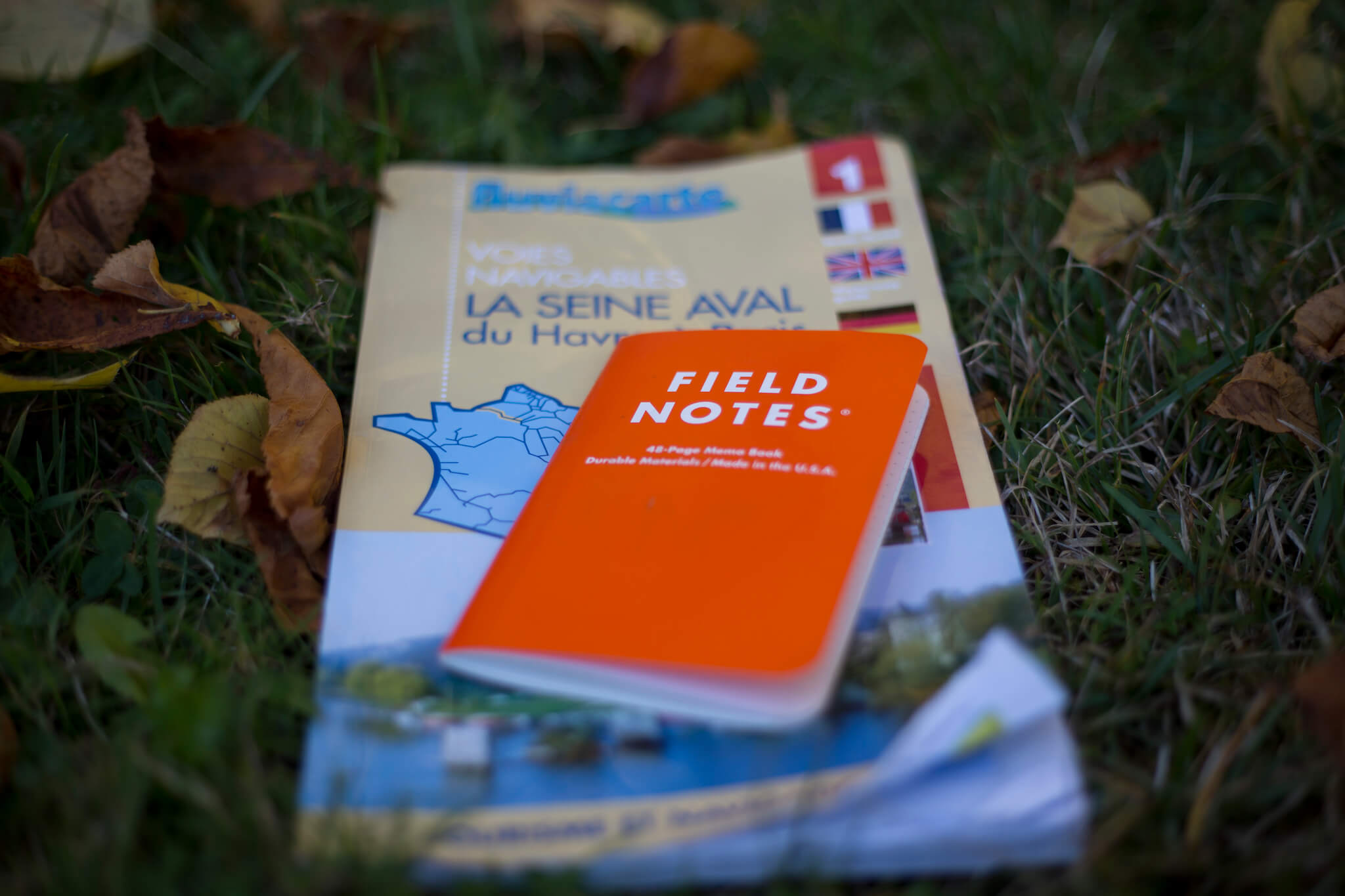
6 days sailing // 220 kilometers rowing
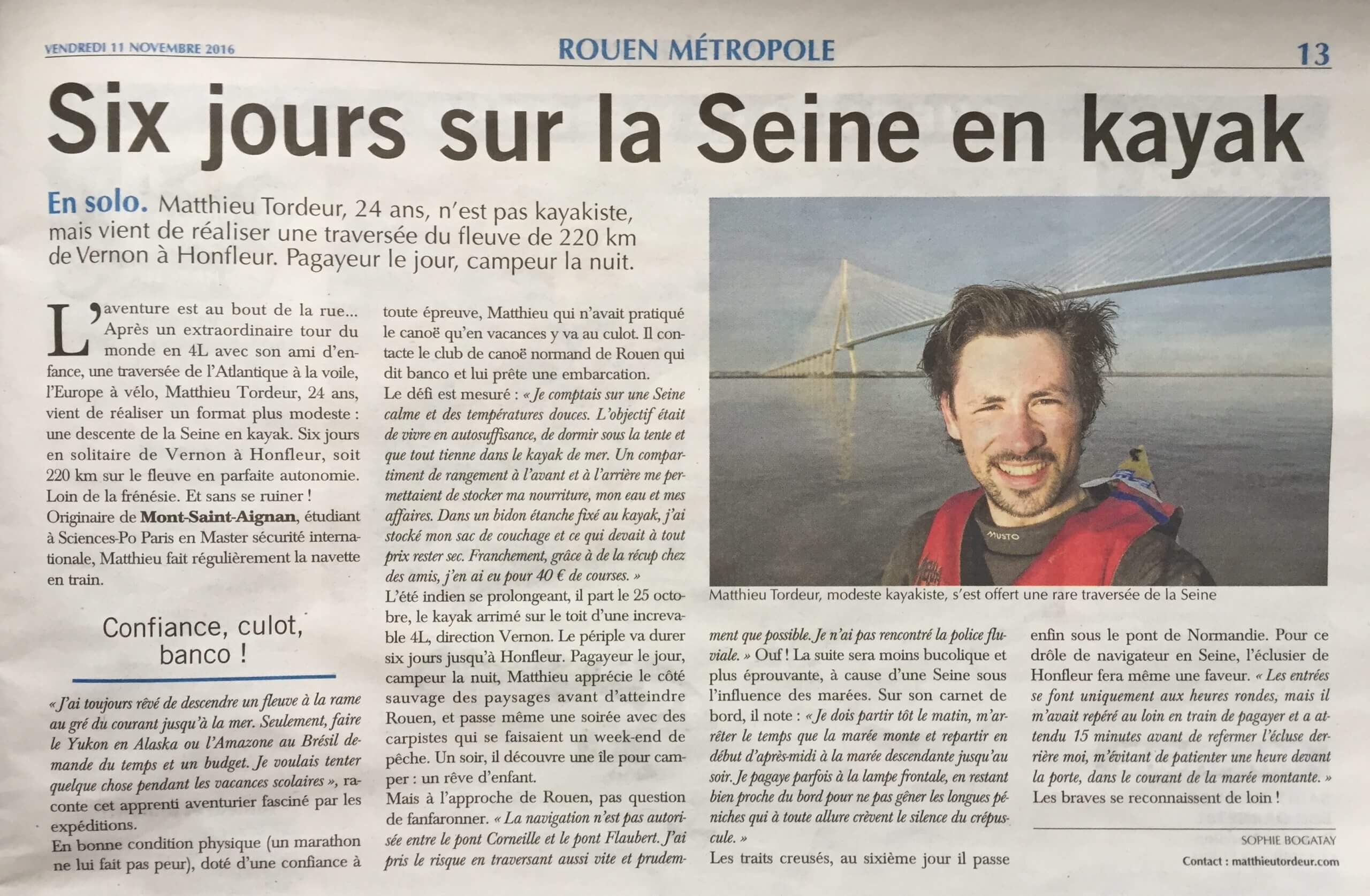
Paris-Normandie of Friday, November 11, 2016.